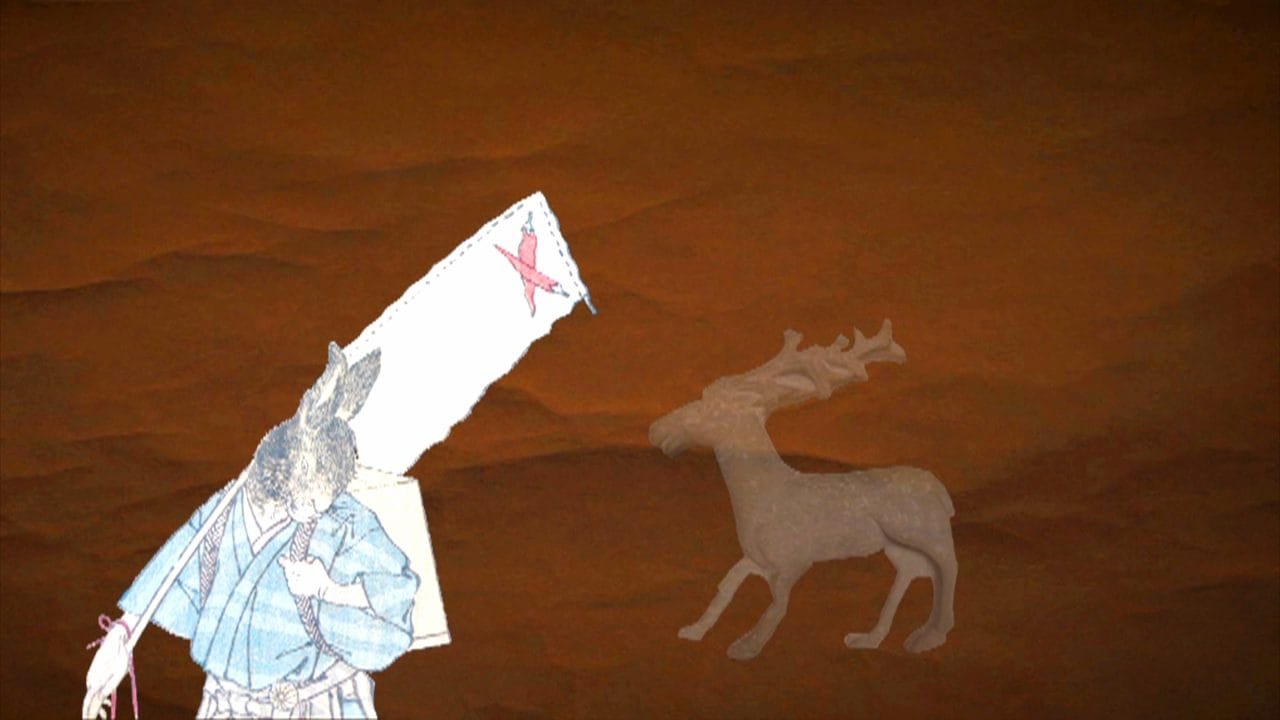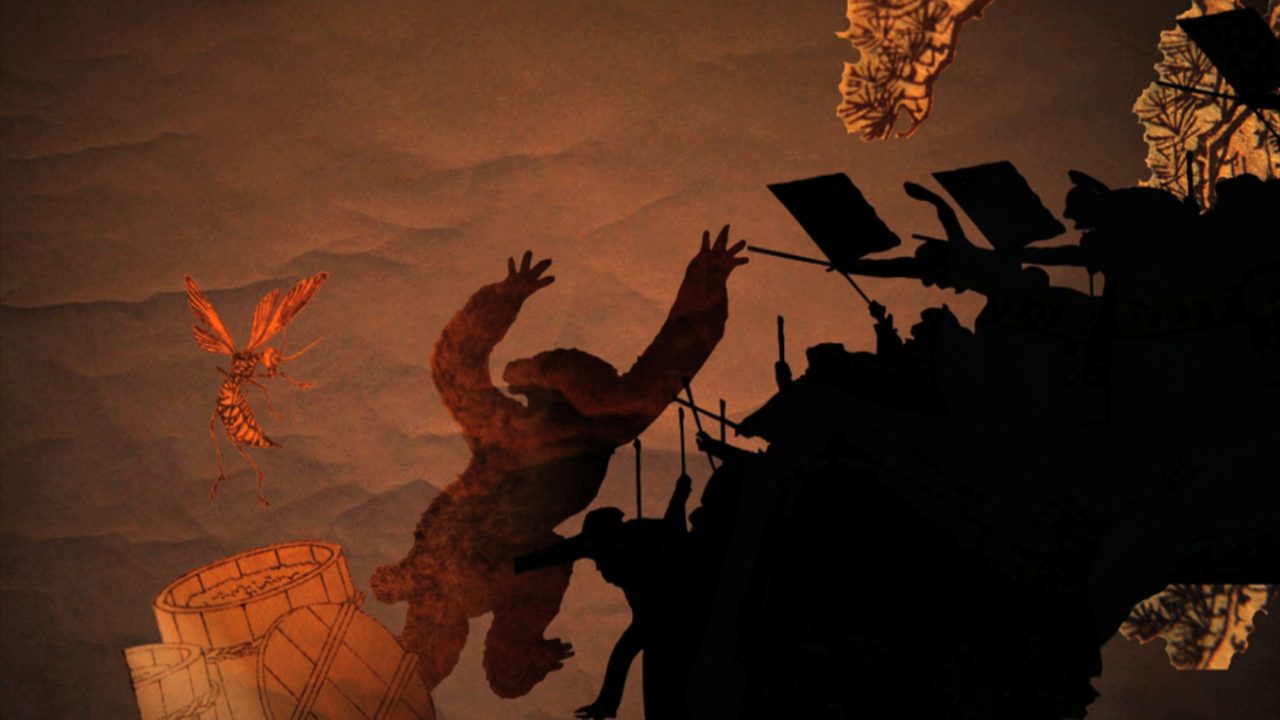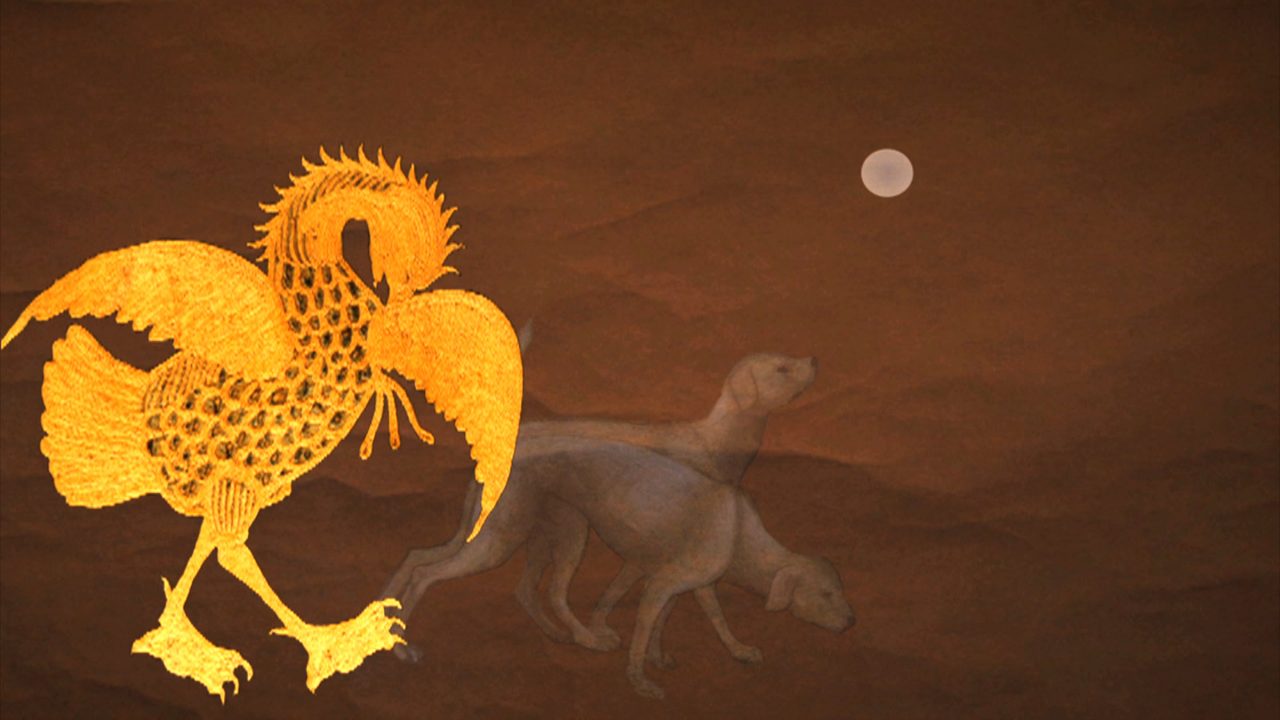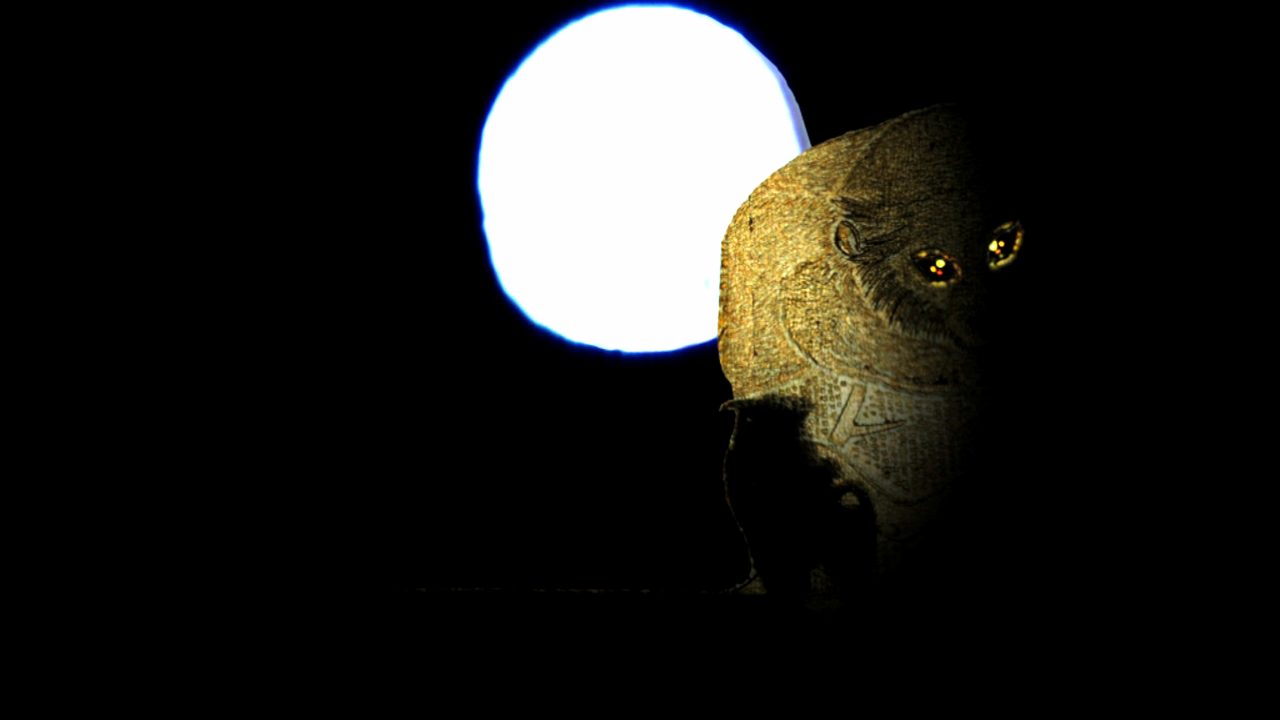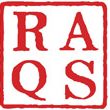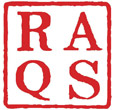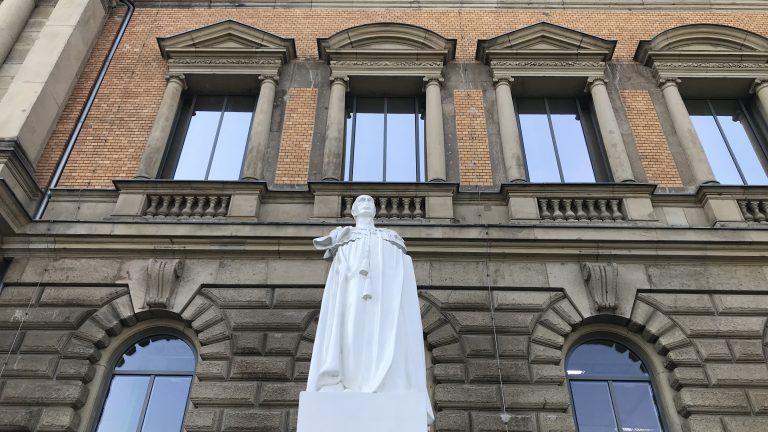Everything Else is Ordinary
Solo Exhibition
K21, Museum for 21st Century Art, Düsseldorf (2018)
Everything Else is Ordinary delves into the elusive, multifaceted nature of time and how it shapes our existence. Raqs explores the concept of time not as a singular, linear force but as a series of intersecting moments that reflect our complex relationships with labor, memory, and each other. The exhibition interweaves various elements of daily life with philosophical reflections.
The works meditate on the simultaneity of past, present, and future, in which the notion of time becomes fluid, marked not by the ticking of seconds but by the accumulation of gestures, glances, and breaths. It presents the ordinary as a site of inquiry, where time is not simply measured but lived, expanded, and transformed through human interaction. Visitors are invited to experience the overlapping, fractured, and reassembled moments of life, challenging the everyday.
A catalogue accompanying the exhibition was also published.
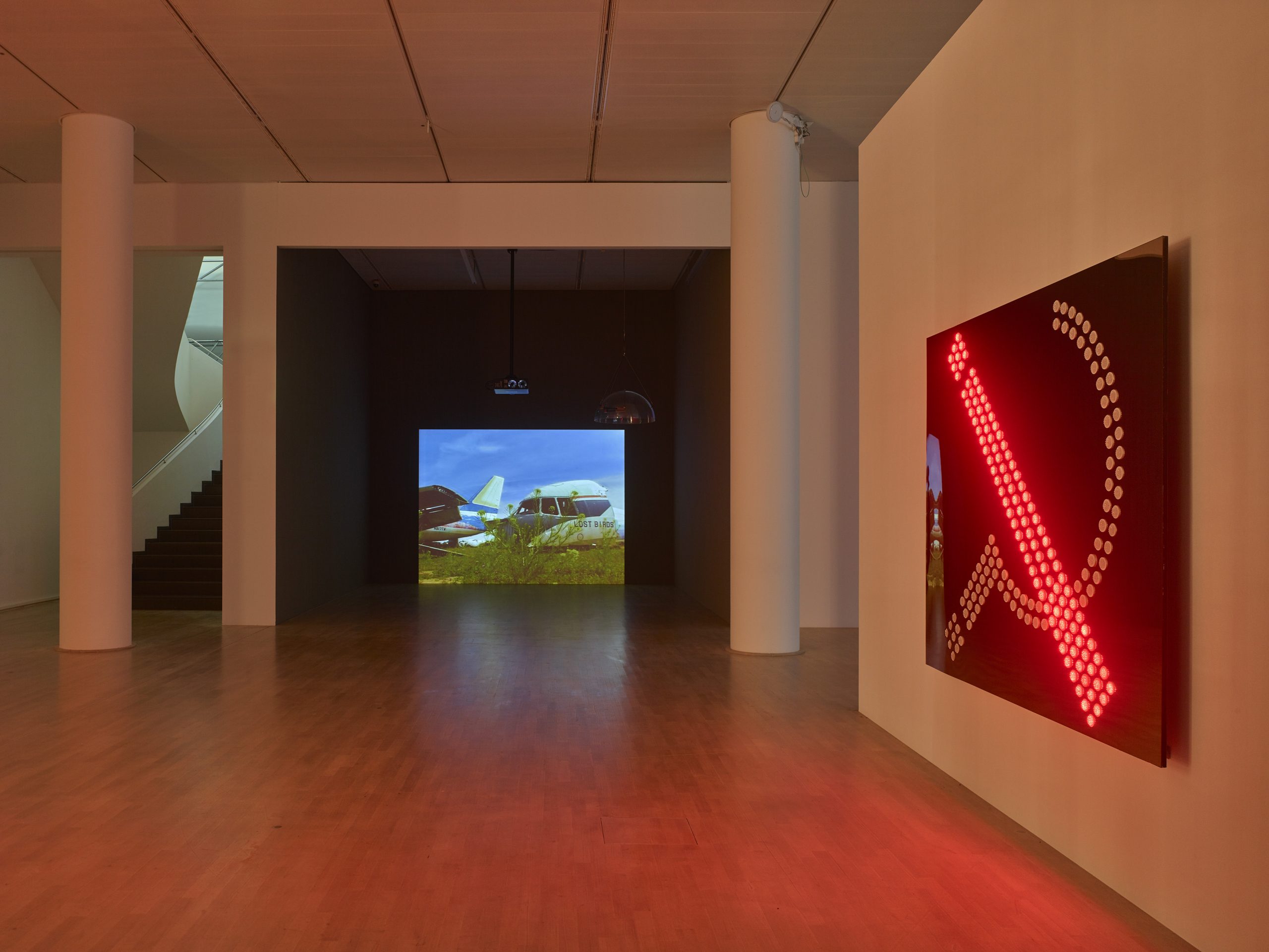
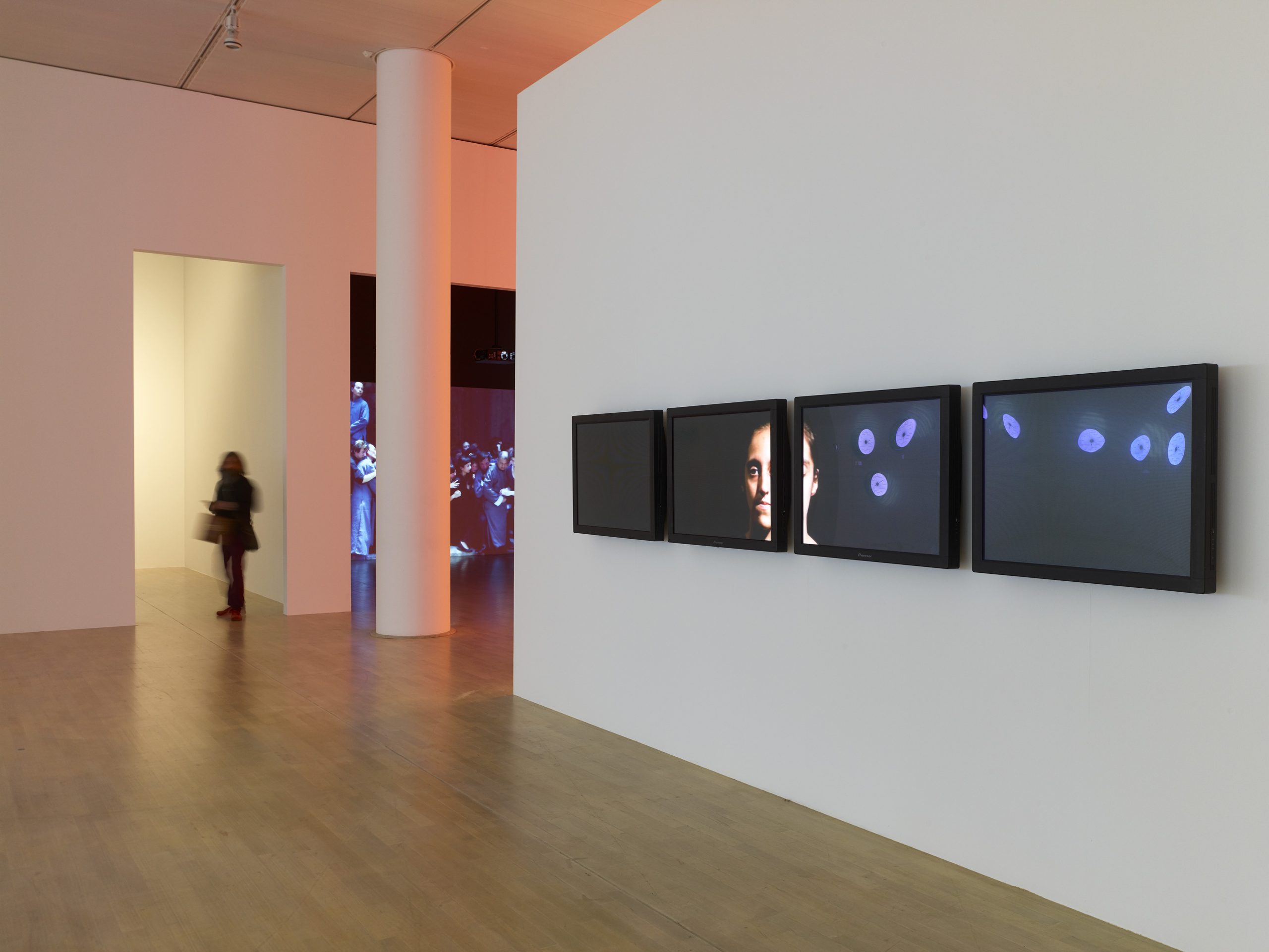
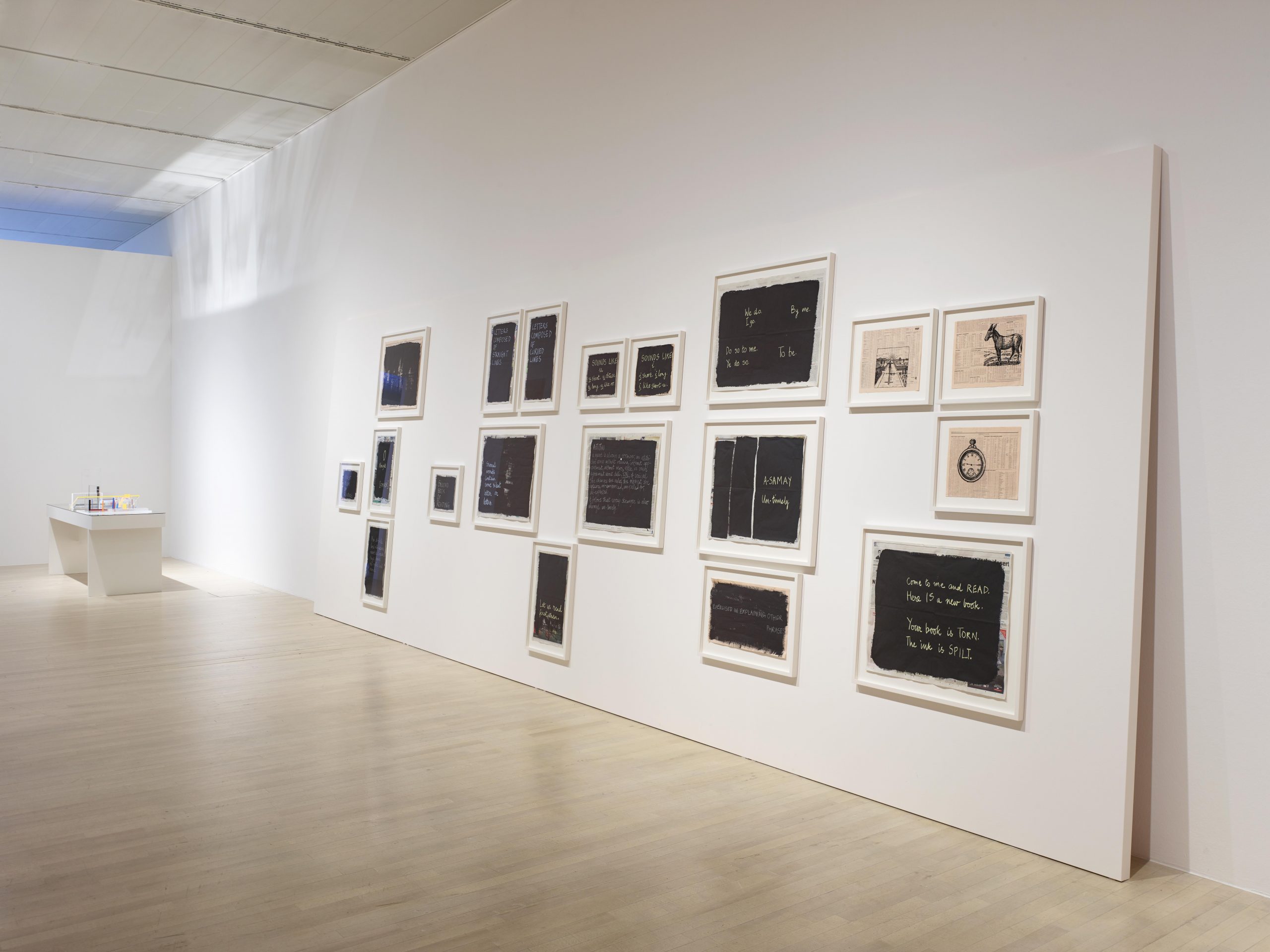
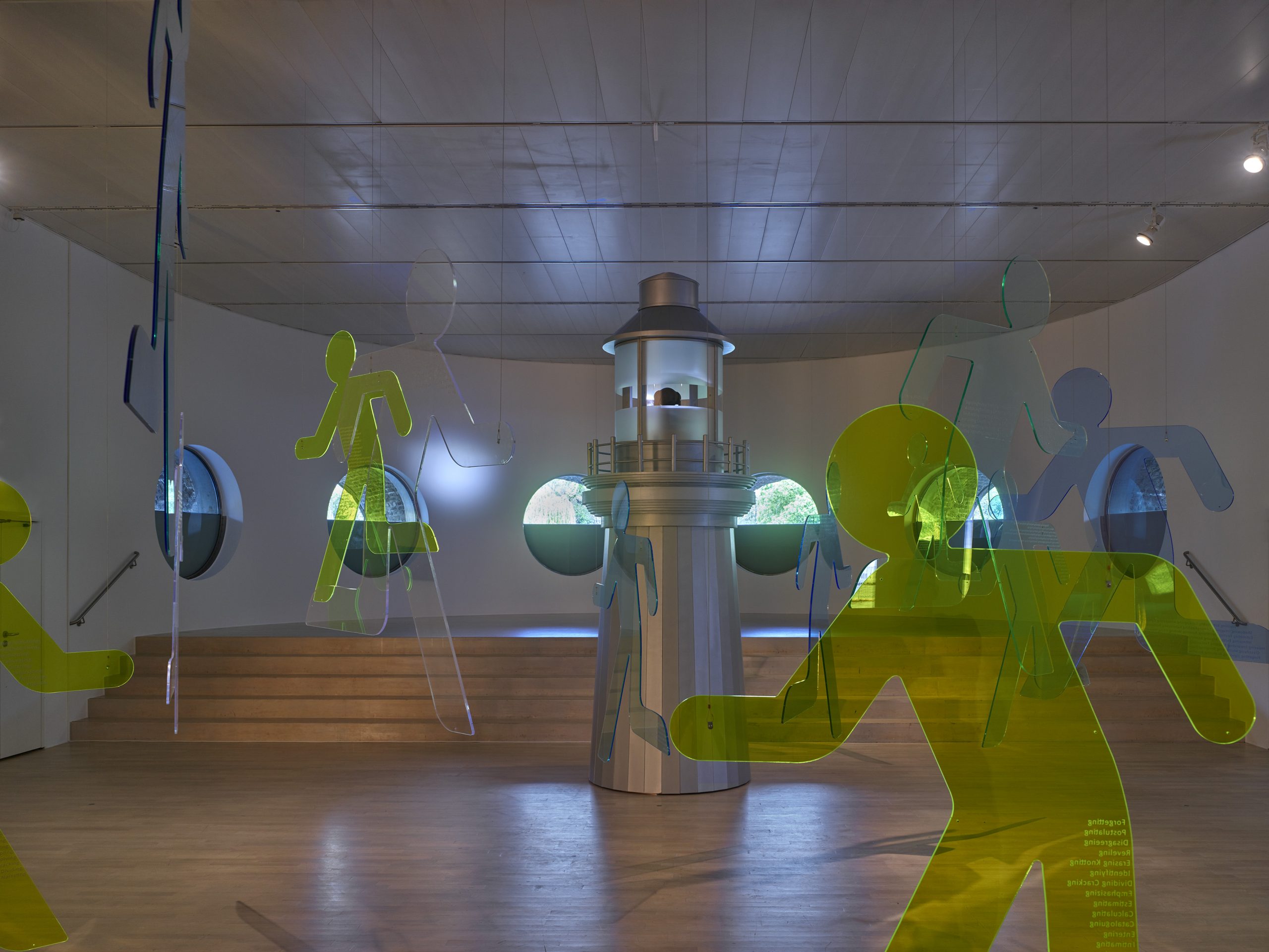


Installation with 27 clocks, high gloss aluminium with LED lights, four flat screen monitors, video and audio looped
Dimensions variable
Escapement invokes clockwork, emotions, geography, fantasy and time zones to ask what is contemporaneity – what does it mean to be living in these times, in these quickening hours, these accumulating minutes, these multiplying seconds, here, now?
Escapement is a horological, or clockmaking term. It denotes the mechanism in mechanical watches and clocks that governs the regular motion of the hands through a ‘catch and release’ device that both releases and restrains the levers that move the hands for hours, minutes and seconds. Like the catch and release of the valves of the heart, allowing for the flow of blood between the chambers of the heart, which sets up the basic rhythm of life, the escapement of a watch, regulates our sense of the flow of time. The continued pulsation of our hearts, and the ticking of a clock, denote our liberty from an eternal present.
With each heartbeat, with each passing second, they mark here and now, promise the future and remember the resonance of heartbeat that just ended. It is our heart that tells us that we live in time. The installation invokes clockwork, emotions, geography, fantasy and time zones. Each clock face has twelve words that describe emotions, or states of being where we would normally expect the hours to be. When its a quarter past twelve, these clocks would read – ‘guilt past epiphany’. Twenty-four of the twenty-seven clocks mark the time of different cities – Liverpool, Baghdad, Delhi, Sao Paulo, Tokyo, Johannesburg and eighteen other locations. Three clocks tagged to three imaginary cities – Babel, Shangrila and Macondo – run backwards mirroring real time. The video screens show the face of an androgynous, ageless person, transiting between the hours, listening to heartbeats and other rhythmic and arrhythmic sounds.
Iterations at: Frith Street Gallery, London (2009) |Sao Paulo Biennale (2010) | Deutsch Bank Lounge, Freize, London (2013) | K21, Museum for 21st Century Art, Dusseldorf (2018) | Breguet Pavillion, Frieze New York (2022) | ‘Liminal Gaps’, NMACC, Mumbai (2024) | Serpentine , Indian Highway
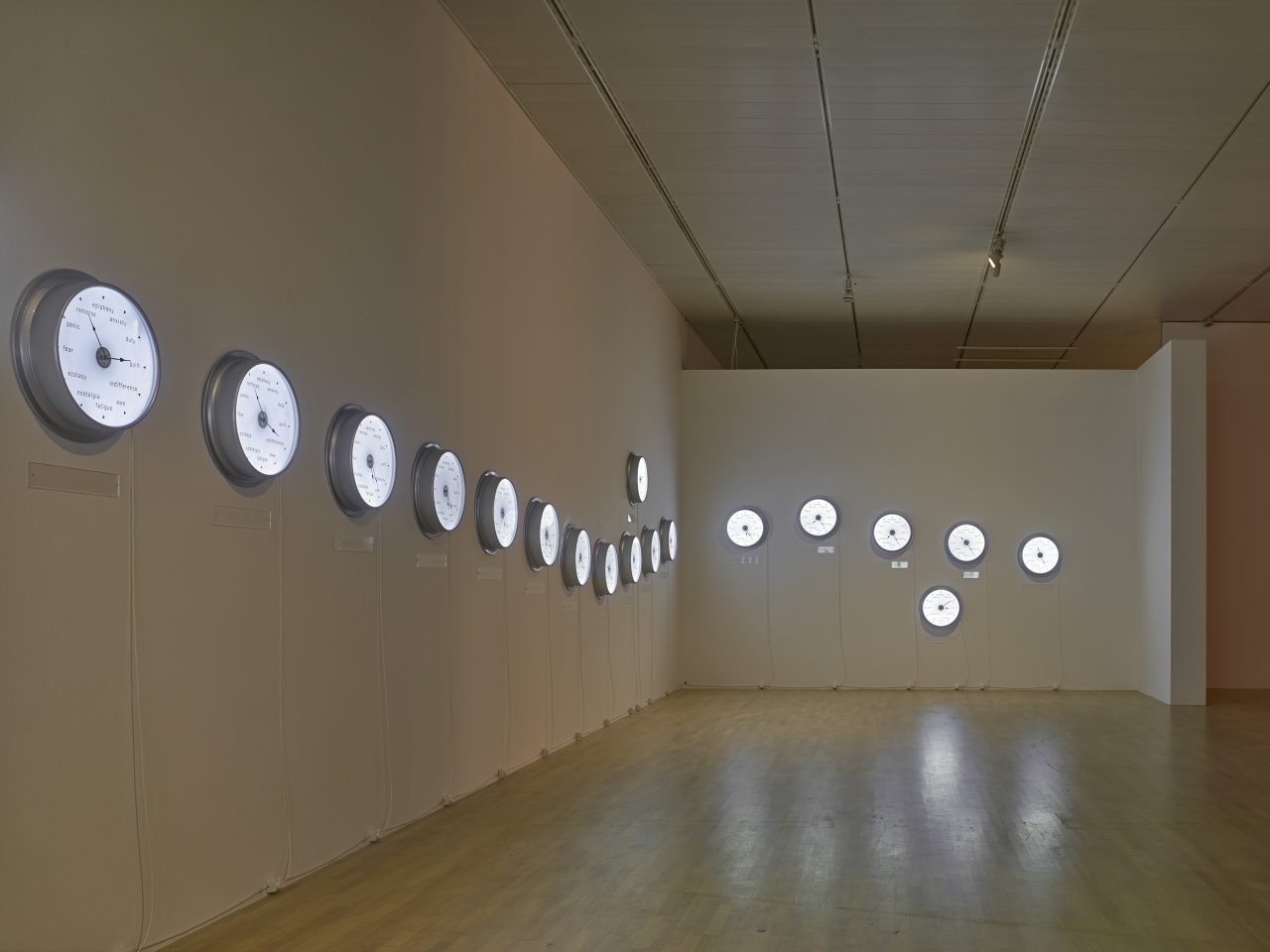

Whenever the Heart Skips a Beat
Animated horological video, words
Duration, 4′ 31″
Whenever the Heart Skips a Beat is an animation presenting a clock-face with changing word couplings – instead of numbers – in order to reference the passing of hours. The words are an array of adjectives and nouns that qualify each other, flying across the face of the clock, arranging and rearranging themselves, producing constant permutations and combinations of states of mind and being through the actions of the hour and minute hands that join two words at different points of time.
The lexical patterns produced by this process register a deeply felt, subjective experience of time and duration. This work grows out of Raqs’ sustained preoccupation with time and with the metaphorical possibilities of horology. It annotates their earlier experiment with clocks, feelings and words – Escapement
Iterations at: National Gallery of Modern Art, New Delhi (2014) | The Whitworth, Manchester (2017)




LED light, steel, matte automotive paint
55.9 x 203.2 x 15.2 cm
While retrieving the time gained in searching for all that is lost and found one can admit to a condition that one suspects that one shares with most people in the world today, of being lost, in search of time.
Iteration at: The Whitworth, Manchester (2017)




Video, Dipytch
Duration 18’32”
Strikes at Time is a lucid dream. It takes readings from an occasional anonymous journal, and a long walk at the edge of the city of the night, to take back the night.
In that no-man’s land annexed by the awakening mind from the fatigue of the labouring day, the work weaves together a disquisition on time, along with a discreet annotation on the philosopher Jacques Rancière’s ‘The Nights of Labour’, together with renditions of the found text of a worker’s diary by the CyberMohalla Ensemble, a group of unorthodox proletarian urbanists that Raqs has been in dialogue with over a decade.
The shadowy presence of a Yaksha and Yakshi – guardians of wealth in Indic mythologies – stands watching over the work, marking time with questions.
Iteration at: Centre Pompidou, Paris (2011) | The Whitworth, Manchester (2018)
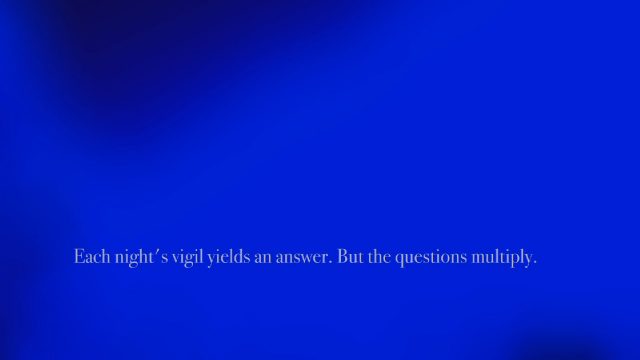
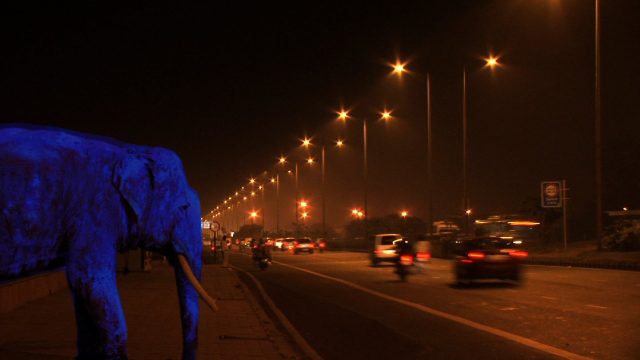
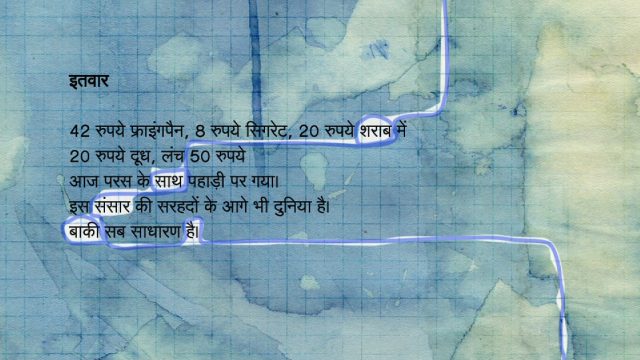
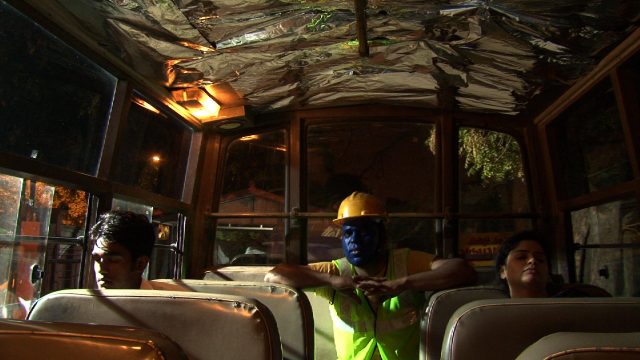
The Things that Happen When Falling in Love
18 coloured and clear acrylic figures with printed mirrored letters, wire cables and fixings
Dimensions variable
The Things That Happen When Falling in Love brings together suggestions of words and people on the move to create an image of a world where the fortunes of both love and labour are framed and dismantled by global forces. Like on-shore sweethearts bidding farewell to men in sailing ships, the world watches its own histories float away. Sometimes, only the words for knowing loss and longing remain.
Iterations at: Baltic Centre for Contemporary Art, Gateshead, Newcastle (2010) | Chronus Art Centre, Shanghai (2013)| National Gallery of Modern Art, New Delhi (2014)| The Whitworth, Manchester (2017)


Unusually Adrift from the Shoreline
Wood, MDF, light fitting, acrylic sheet, vinyl, silver paint,
4 x 1.3 m
Unusually Adrift From the Shoreline is a work about darkness, light, navigation and memory. The work appears as the top of a to-scale lighthouse, relocated in an interior space, emitting a beam of light that roams and seeks. Its dislocation, and its echo of shorelines and possible danger, are intended to prompt unfamiliar thoughts in the city. Thoughts and feelings about the pleasures and the hidden perils of losing oneself: at sea, and in the oceanic expanse of time.
Iterations at: Neighbourhood Secrets, Stavanger, Norway (2008) | The Whitworth, Manchester (2017)
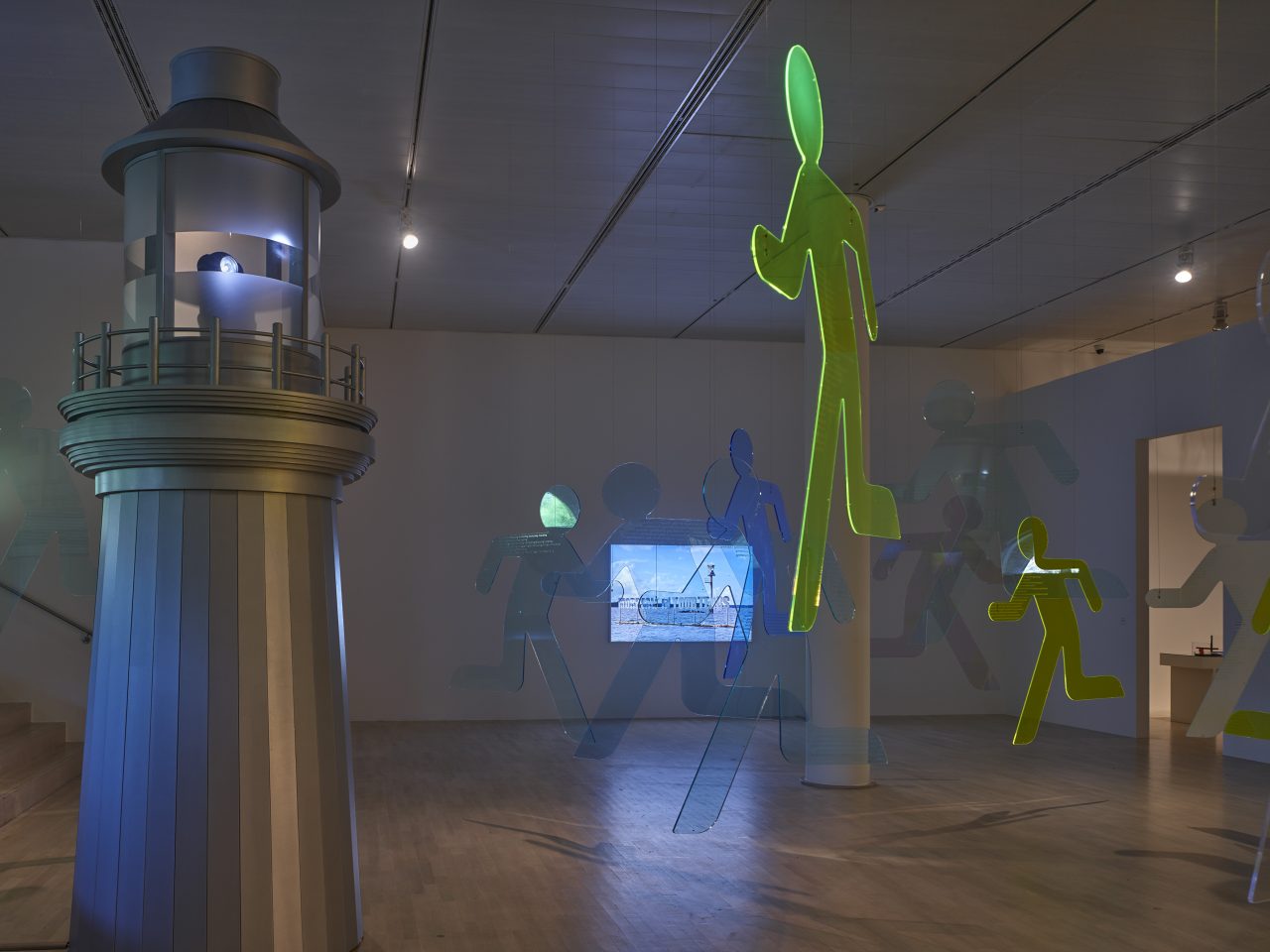
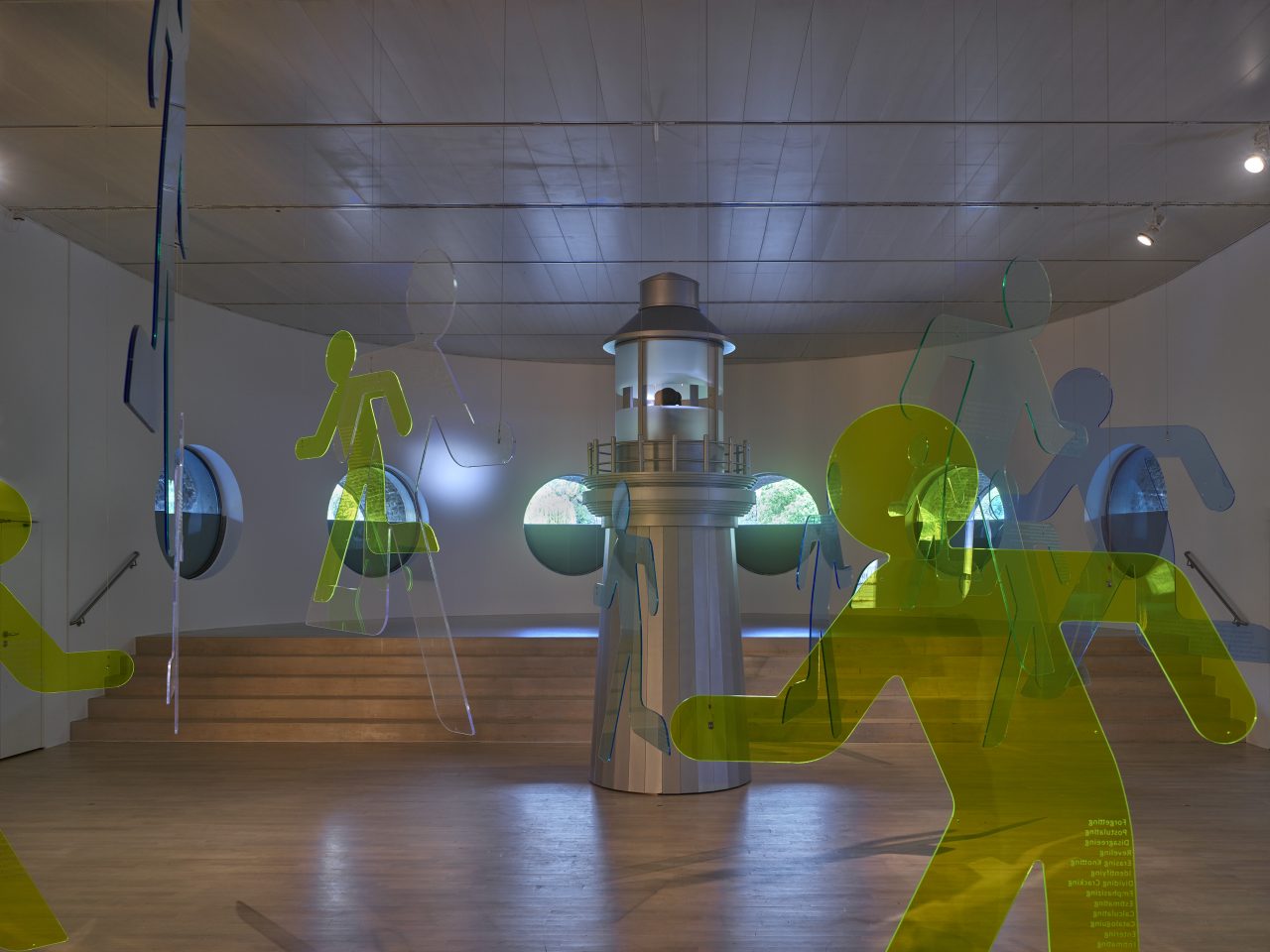
The Knots that Bind are the Knots that Fray
7 video installation
Screen 1, 1’24”; Screen 2, 59″; Screen 3, 1’09”; Screen 4, 2’10”; Screen 5, 1’02”; Screen 6, 56″; Screen 7, 1’43”
In early April 2009 the last of the distinctive Titan cranes from the Tyneside Swan Hunter shipyard in northern England were loaded up onto a heavy load vessel and sailed out of the River Tyne. These vast iconic forms were dismantled and shipped to a new life at the Bharati shipyard on the West coast of India.
Raqs took found footage of the last voyage of the ship-building cranes down the Tyne river (shot by an engineer and amateur shipyard enthusiast) to create a world of passages, transitions and departures. The ghostly forms within the images allude to floating worlds, to the enchantment of industrial machinery and the life of ships.They remain indefinite and suggestive of place, evoking an archive built by acts of lay remembering. The video enthusiast’s footage of a piece of local history is transformed in this work into vignettes from a fantastical voyage. The work is both about drifting away and coming ashore. The ‘knots’ of the title can refer both to nautical speed as well as to the complex ties that bind people to histories. Ties hold things together and speed frays them apart. The knots that bind are the knots that fray.
Iterations at: Baltic Centre for Contemporary Art, Gateshead, Newcastle (2010) | Kiran Nadar Museum of Modern and Contemporary Art, Noida, Uttar Pradesh (2012)



Photograph, LED Lightbox
1.80 x 1.26m
More Salt In Your Tears first presented as a text sculpture composed of three dimensional stainless steel letter-forms anchored on to a shallow section of seabed of the Baltic Sea near Turku, Finland. The letters combine to form a single phrase – More Salt In Your Tears – that is visible from the decks of passing ferry-boats, ships and low-flying aircraft. The letter-forms are a set of polished surfaces, gleaming like mirrors as they stand one metre above the water and fifteen meters across the surface of the sea. The words change colour as the sea, sky and sunlight vary over the course of the day. The letters act as an index of the alive, changing surface of the sea, the seasons, and of time itself.
The work writes on water, connects the human body through tears to large natural water bodies, and it draws attention to the ways in which we all respond at a subliminal level to the presence of water. This work continues a preoccupation with the emotional resonances of marine and coastal landscapes that began with Unusually Adrift From the Coastline (2008), which had used the memory of abandoned light-houses to tap into the ineffable quality of our encounters with light, horizons and coastlines by the sea.
A photographic iteration of the large sculptural piece was part of Everything Else is Ordinary.
Iterations at: Contemporary Art Archipelago, Turku, Finland (2011)
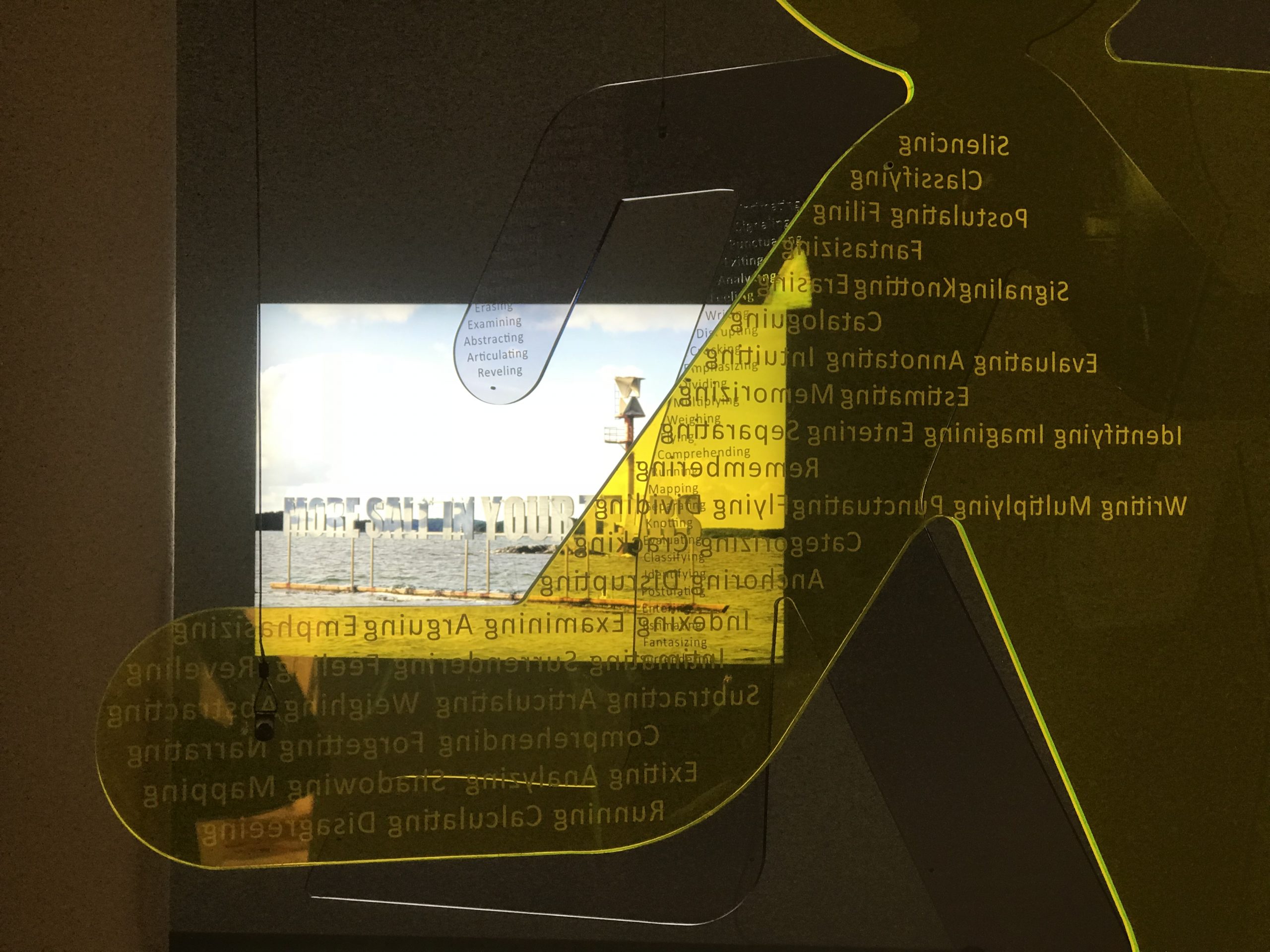
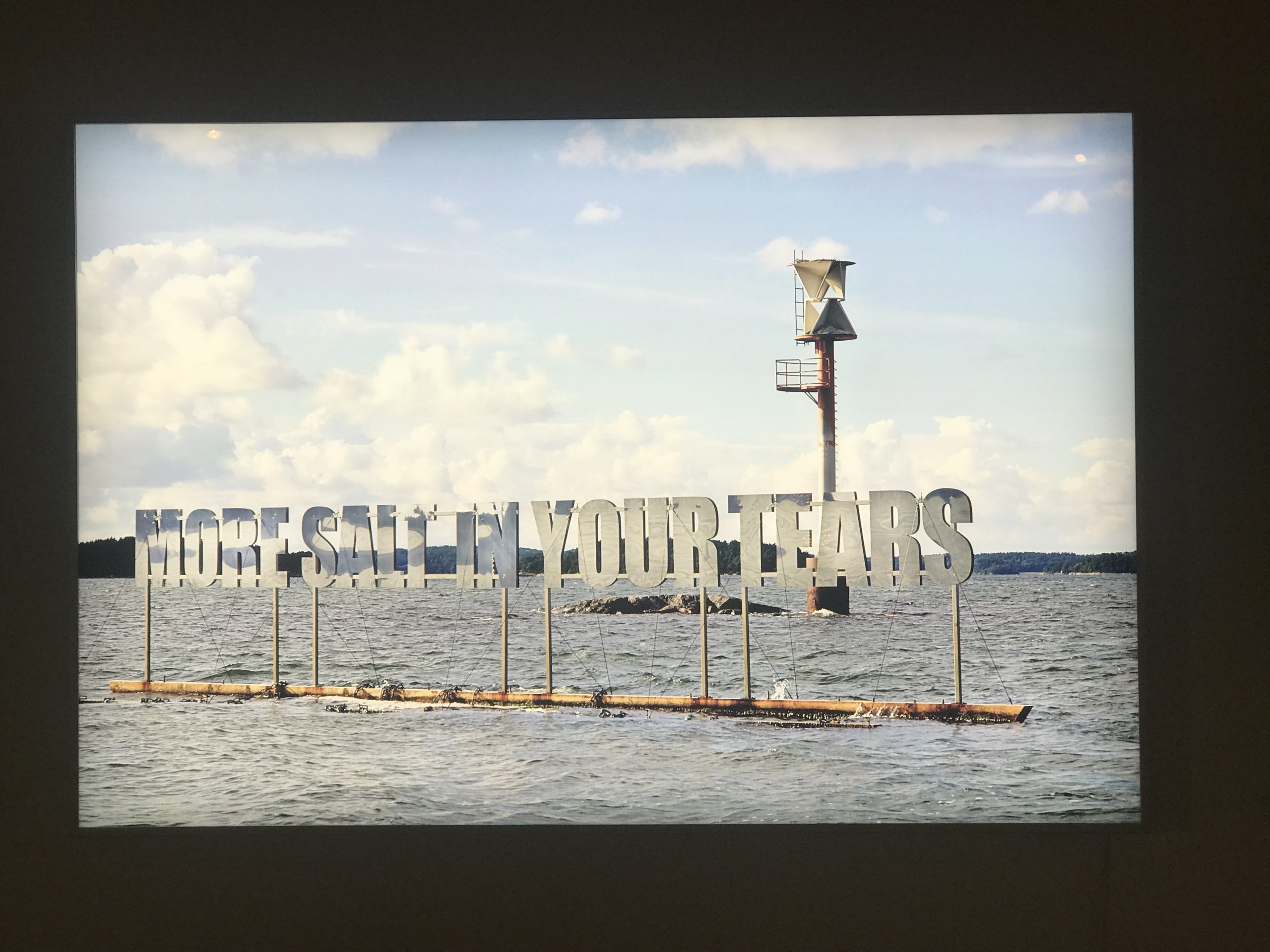
Eight sculptures (resin), nine plinths (wood and bitumen) and nine plaques (faux black marble)
(4 sculptures displayed)
Truncated Mid-Section, 3’3” x 3’10” x 7’11”; Empty Robe, 3’7” x 3’1” x 10’; The Viceroy’s Better Half, 3’4” x 2’5” x 7’6”; The Grip, 3’ 6’ x 2’9” x 7’11”
Coronation Park offers nine meditations on power’s deepest anxiety: the inevitability of abdication, which always shadows its claim to permanence.
These formations, presented as defaced, truncated and interrupted sculptures – are reminiscent of, or abstracted from, erstwhile Imperial statuary.
In this case, they also reference an actual site of some dereliction and neglect called Coronation Park, located at the outskirts of Delhi, where the Imperial Durban of 1911 was held to pay homage to the British Monarch and his consort when they visited the citadel of their Indian Empire. Today this site is the last refuge of abandoned and dethroned statues of monarchs and viceroys that once graced places of prominence in India’s capital.
In Coronation Park, Raqs makes nine quasi-doppelgängers of these Imperial residues stand on, beside, and in one instance, go AWOL from, their plinths.
For this exhibition, 4 sculptures were displayed, namely ‘Truncated Mid-Section’; ‘Empty Robe’; ‘The Viceroy’s Better Half’; ‘The Grip’.
Iterations at: Giardini, Venice Biennale (2015) | The Whitworth, Manchester (2017)
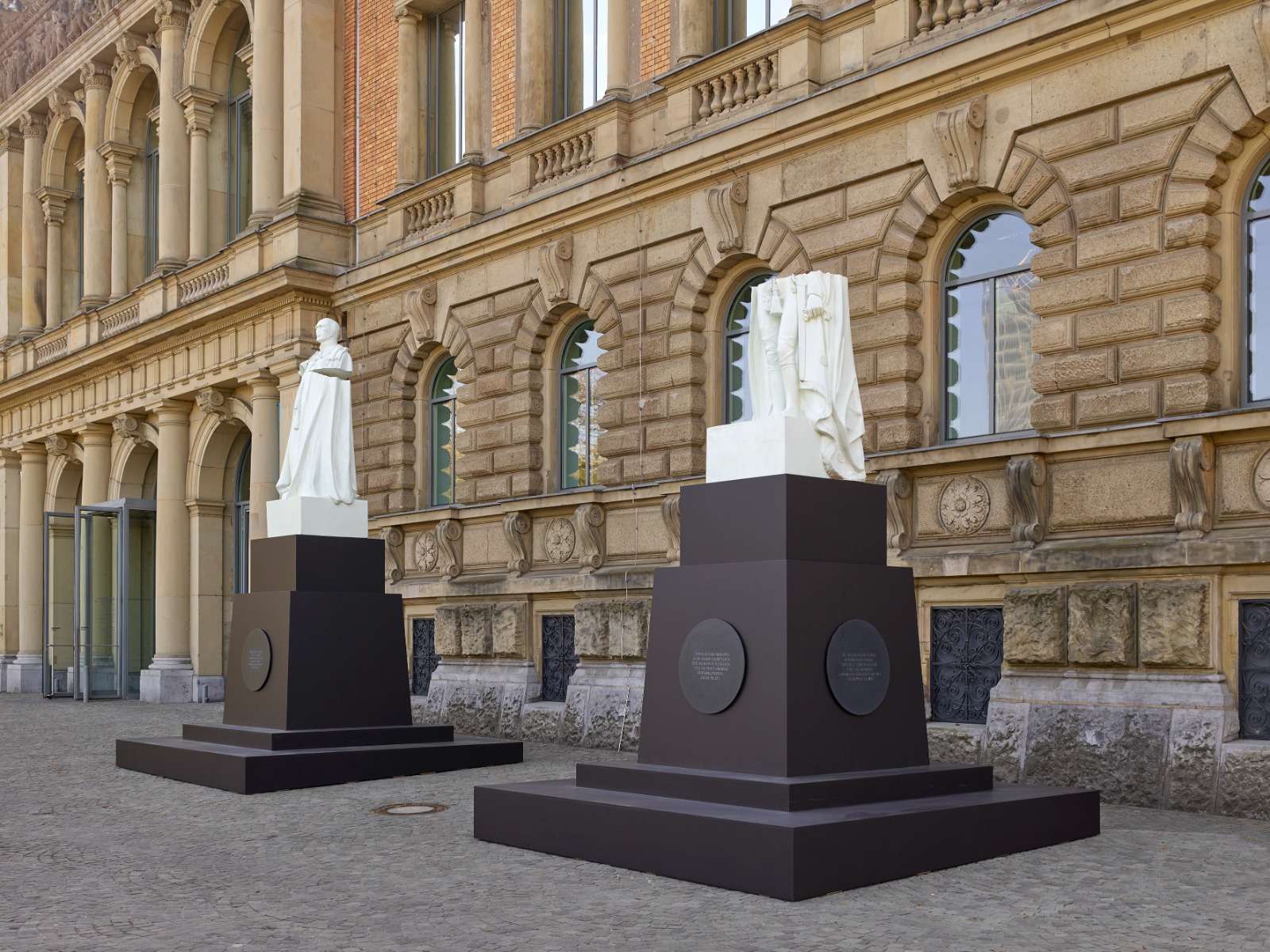
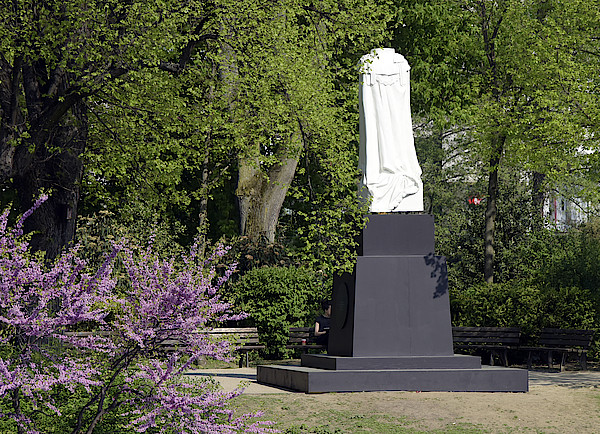
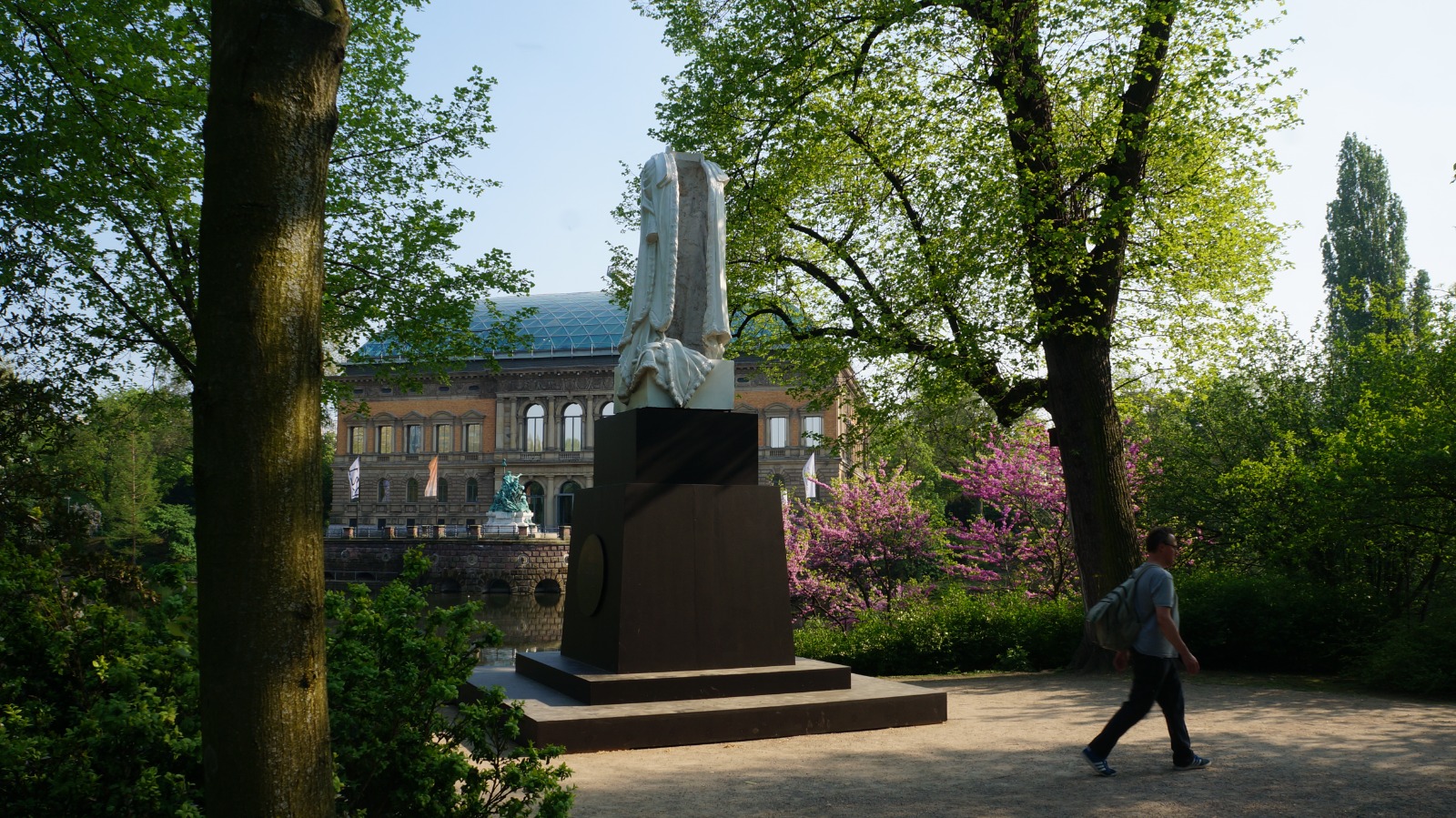
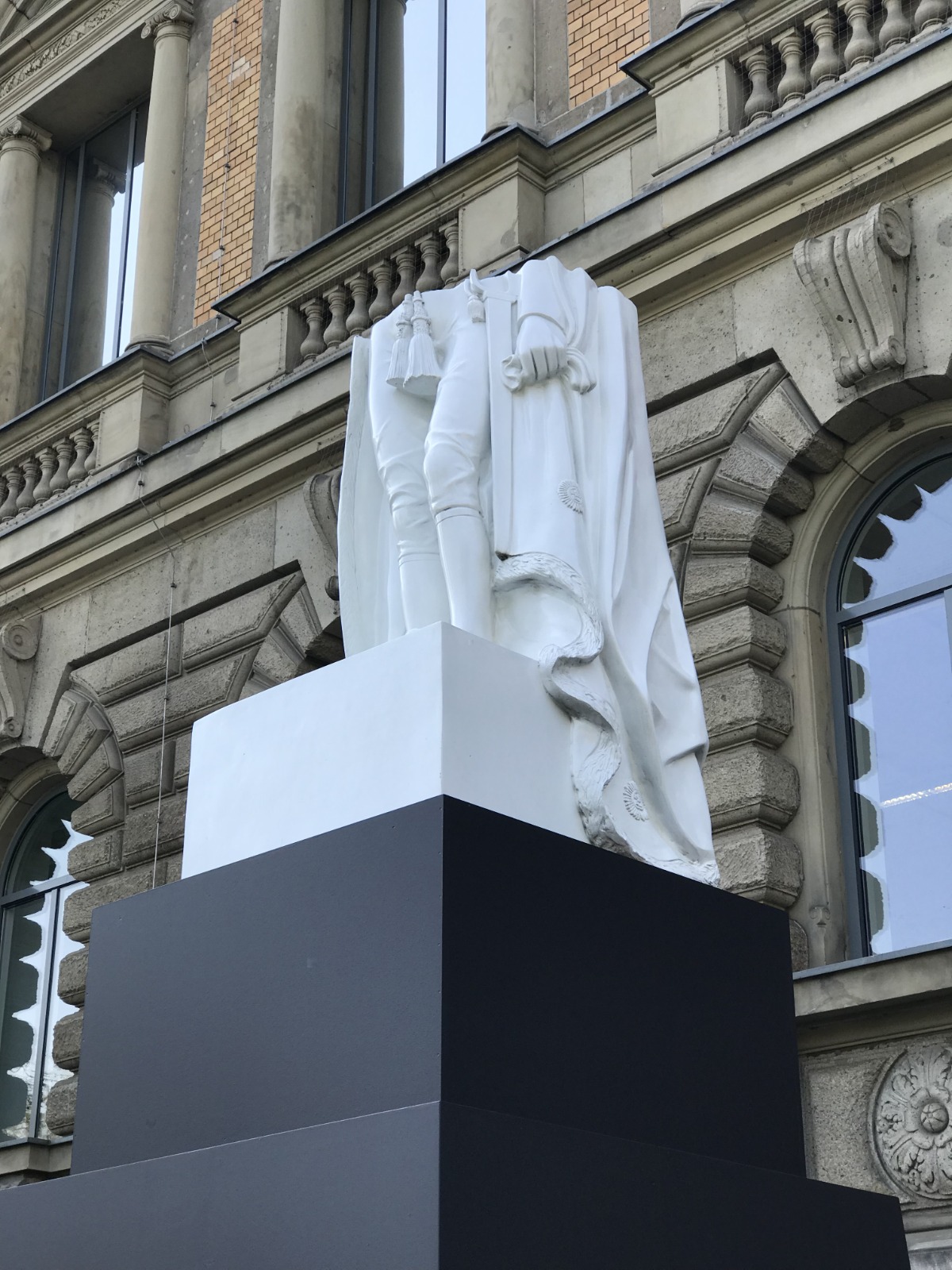
LED light, mirrored ACP, synch machine
1.85 x 2.44 m
Marks offer a luminous typographic annotation to the political imagination. The illuminated shapes produced by the array of red light bulbs suggest an arresting configuration of orthographic devices – a question mark and an exclamation sign – that couple to form an echo of the hammer & sickle sign. The work bathes the entrance to the foyer in red light, and finds itself reflected on many of the surfaces that surround it.
By having questions marks and exclaimation marks perform the hammer & sickle sign, ‘Marks’ (a play on the name ‘Marx’) reiterates and celebrates the legacy of asking questions and articulating deeply felt human desires.
Iterations shown at: Headquarters of French Communist Party, 2, Place du Colonel Fabien, Paris as part of Festival D’Automne, Paris (2011)|Centro de Arte Dos de Mayos (CA2M), Madrid (2014)| Museo Universitario Arte Contemporaneo, Mexico (2015)| Fundacion PROA, Buenos Aires (2015)




Acrylic, light bulbs, electrical wires, PVC
1.7 x 1.3 m (per letter)
Revoltage fills the space it occupies with warmth, light, and the charge of an idea that embraces both celebration and rage. It suggests the energy, or “voltage,” of what it means to revolt, to commit oneself to humanity. The letters join to suggest an incandescent hybrid between electricity and uprising – alternately illuminating the words “Revolt” and “Voltage” through a fluctuating electrical current in order to coin a new thought, “Revoltage”. Revoltage registers first as an after-image (the kind we see when we shut our eyes after looking at a strong source of light), and then as a subliminal suggestion within our consciousness to brighten our days with the brilliance of a form of truant, rebel power that refuses to either name itself or be named into domesticity.
A cascade of black and red wiring (anarchy’s traditional colours) makes its way down from the multitude of light bulbs that make up the word, and flows along its length on the ground. The bunched wires merge and divide like a map of the tributaries of a mighty, turbulent river before disappearing into the shadowy darkness behind the work. By representing the transport of the electrical energy that fuels the work, the wires evoke the way in which ordinary people all over the world have flooded their cities in recent times (in Cairo, New York, Athens, Madrid, Moscow, Tel Aviv, and elsewhere), like rivers in spate, electrifying global consciousness with the actualisation of a new politics, carrying with them the charge of a new mode of being human.
With Revoltage, Raqs have begun writing a new glossary for these times.
Iterations shown at: Project 88, Mumbai (2010) | Festival d’Automne, Espace Oscar Niemeyer, Paris (2011) | Art Unlimited Basel (2012) | Tel Aviv Museum (2012) | Zentrum für Internationale Lichtkunst, Unna (2014)| NGMA, New Delhi (2014) | Centro de Arte Dos de Mayos (CA2M), Madrid (2014)| Museo Universitario Arte Contemporaneo, Mexico (2015)| Fundacion PROA, Buenos Aires (2015)
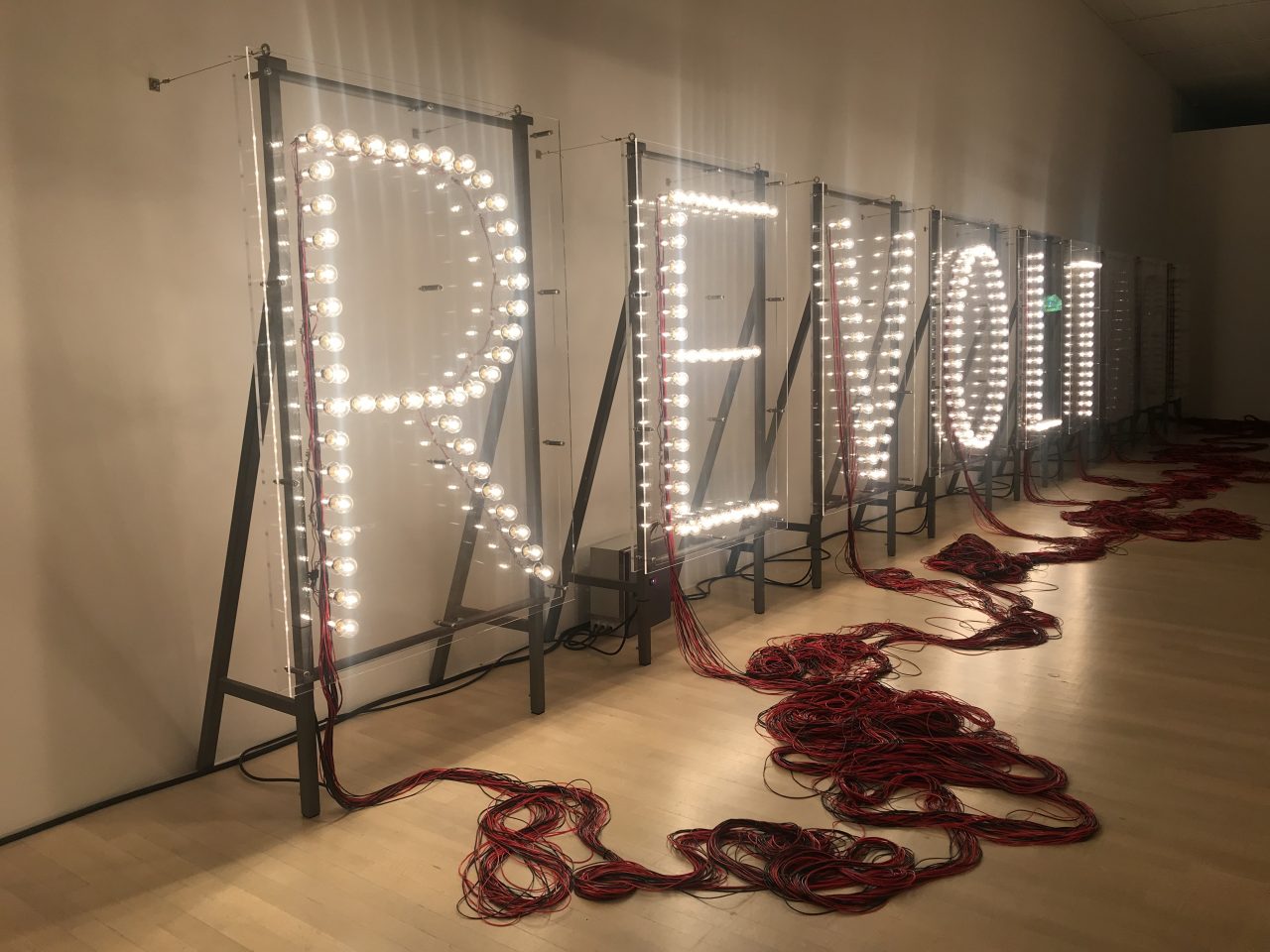
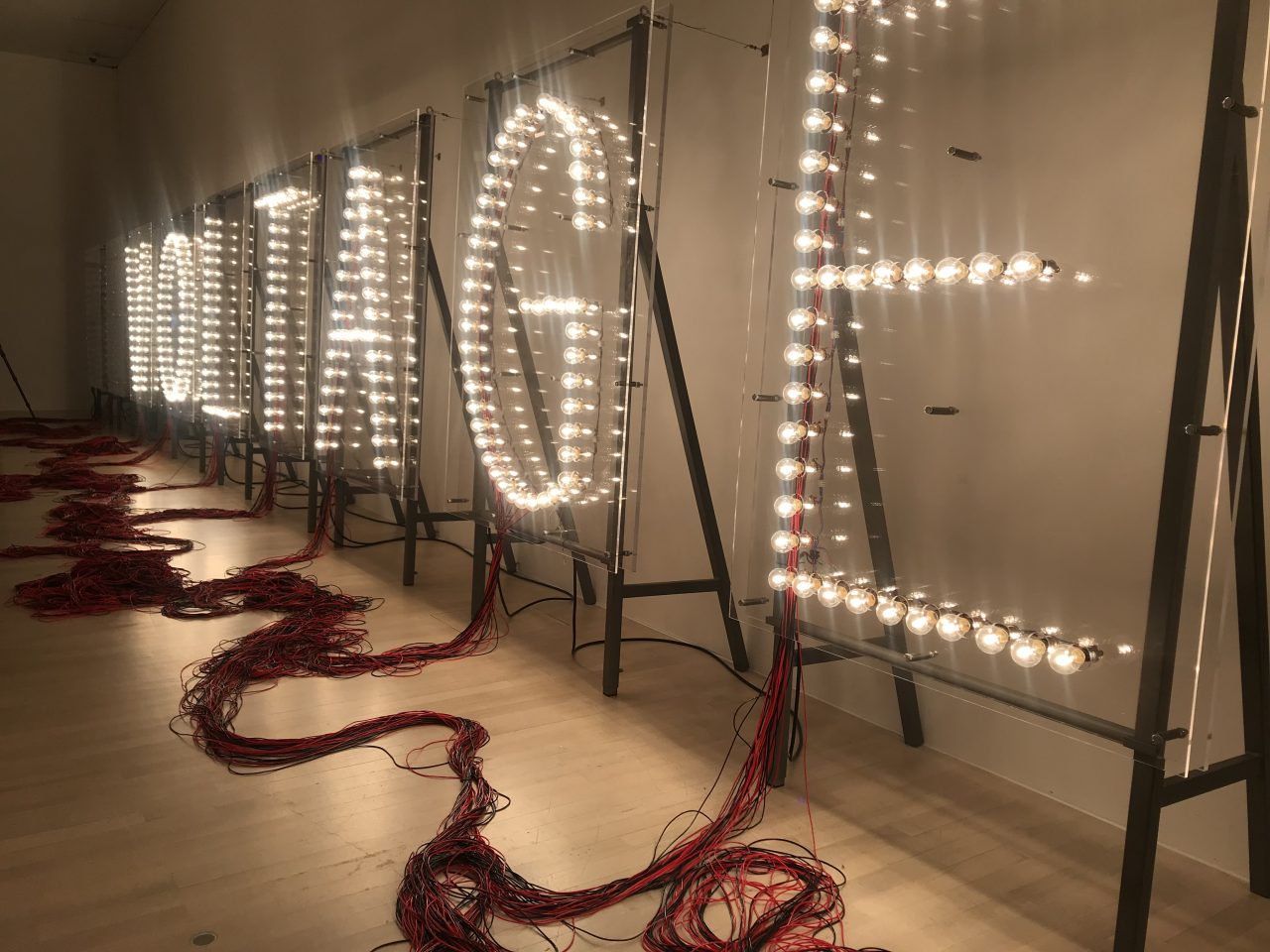
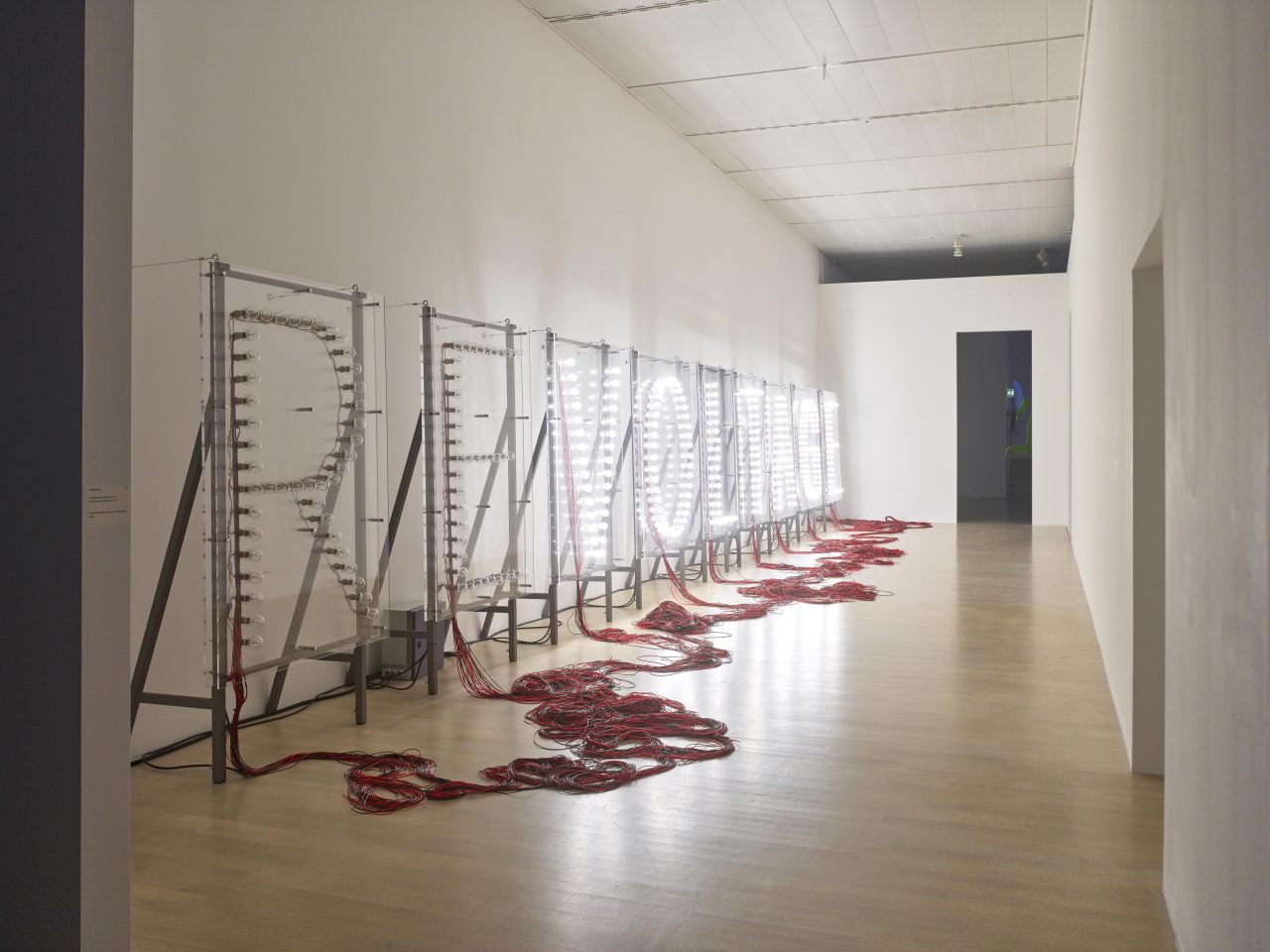
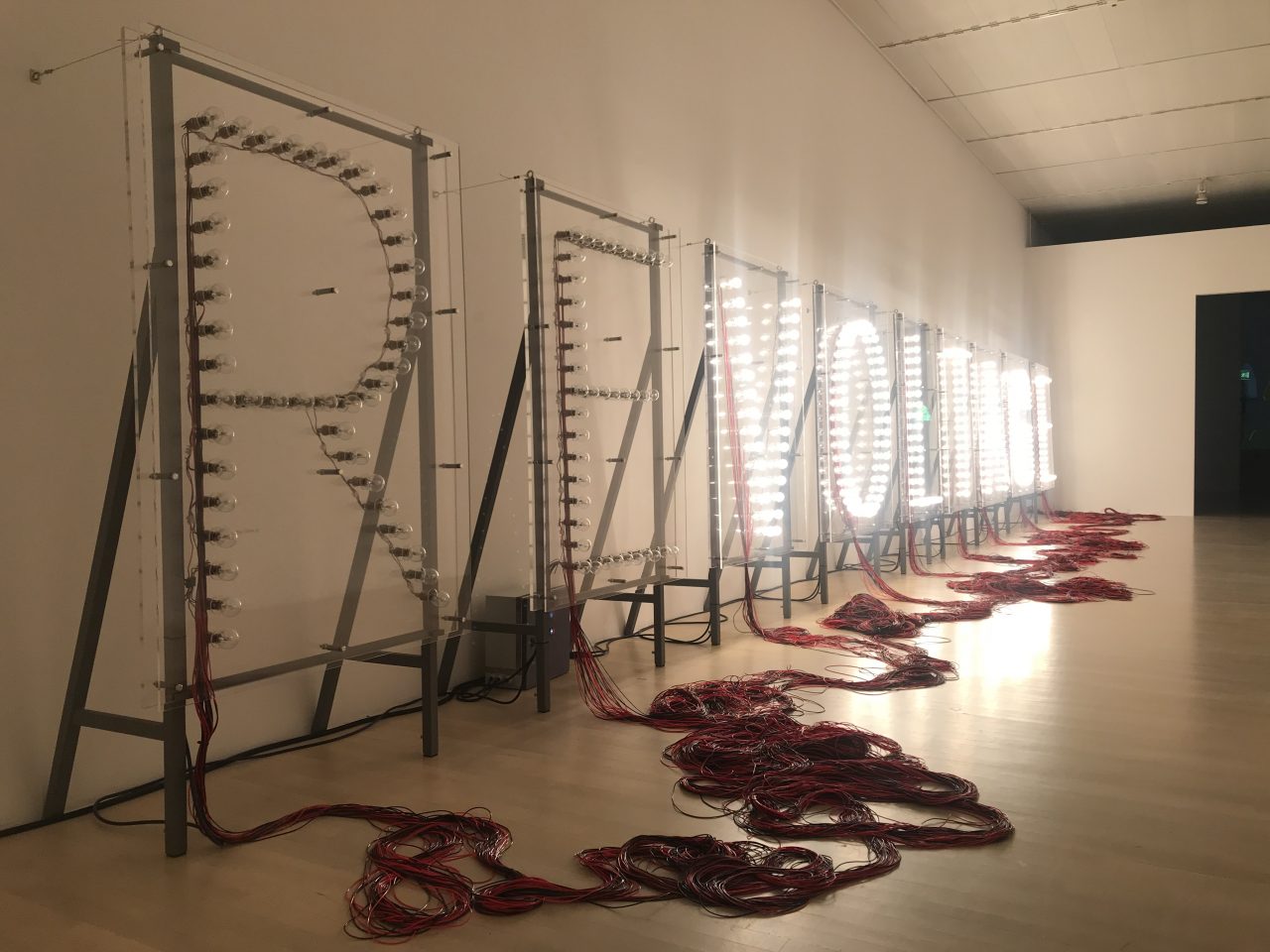
Single-channel video projection
47″
In every sum figured by power, a remainder haunts the calculation. Not everything adds up. A people are never equal to a listing of their bodies. They are something more and something less than a population. Counting counter to the reasons of state, Raj Konai, a peasant from nineteenth century Bengal, the owner of the floating trace of a disembodied hand indexed in a distant archive, persists in his arithmetic. The handprint of Raj Konai was taken in 1858 under the orders of William Herschel – scientist, statistician, and at the time, a revenue official with the Bengal government. It was sent by Herschel to Francis Galton, a London eugenicist and pioneer of identification technologies. It is currently in the custody of the Francis Galton Collection of the University College of London. This is where the Raqs first encountered the image of Raj Konai’s hand. Fingerprinting experiments, and later technologies, all began with this handprint. India has now embarked on a nationwide Unique Identification Database (UID) and plans to have its billion soon counted and indexed.
Iterations shown at: Lalit Kala Akademi, New Delhi (2011); Art Gallery of York University, Toronto (2011); Museum fur Moderne Kunst (MMK), Frankfurt (2012) | National Gallery of Modern Art, Delhi (2014)
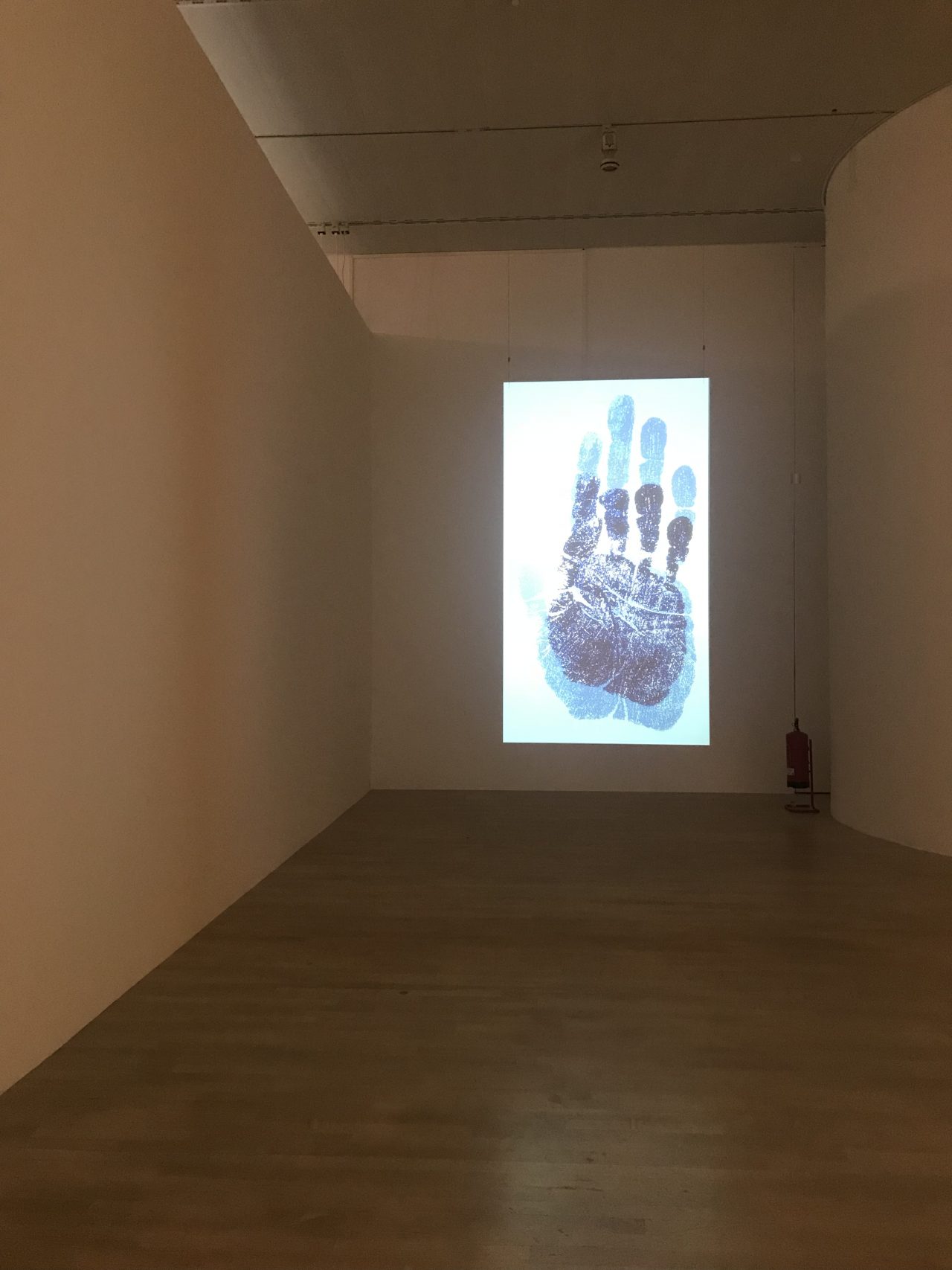
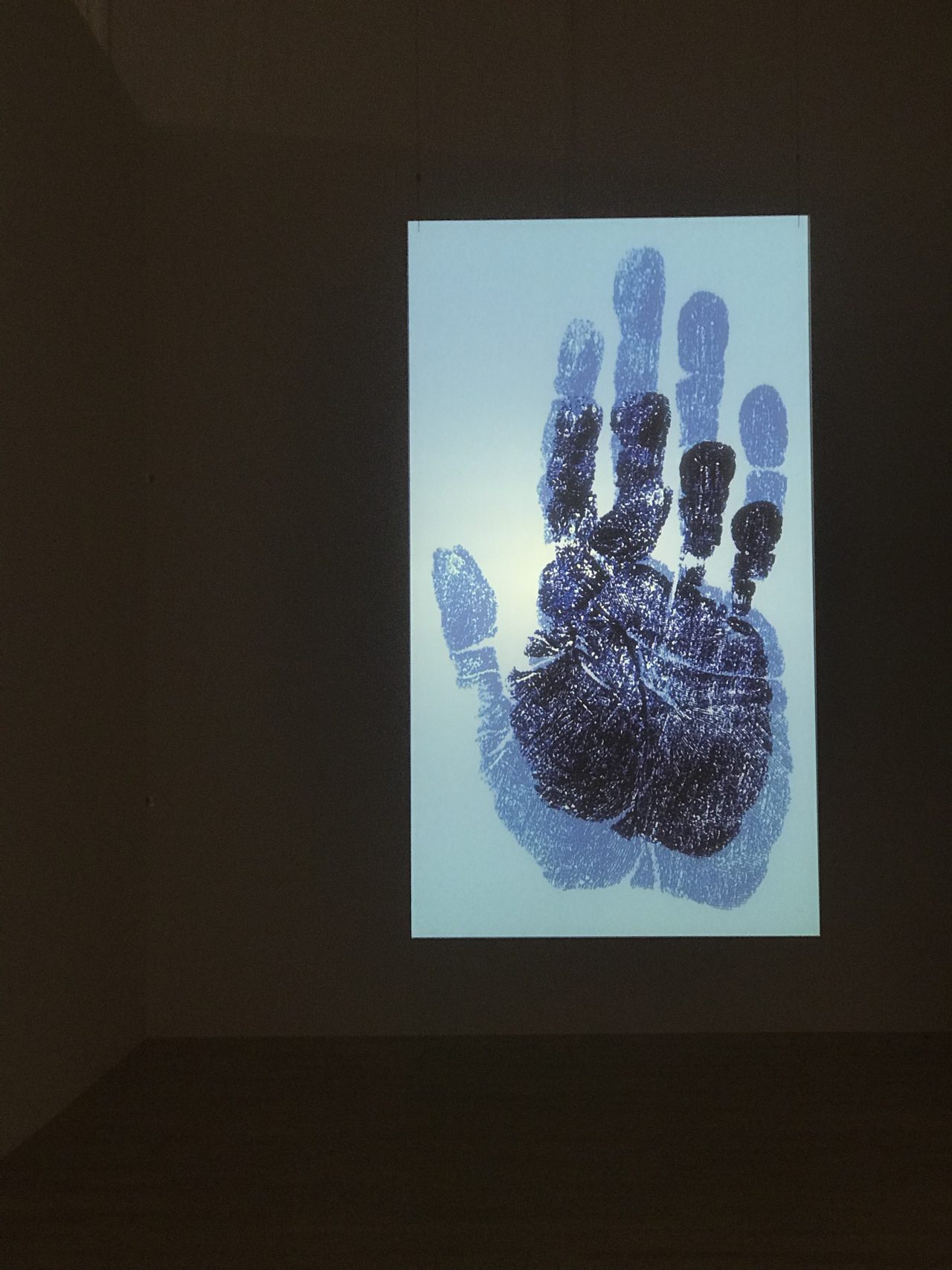
Corrections to the First Draft of History
Newspaper, blackboard paint, chalk, multiple frames
Dimensions variable
In 1850, a man called Peary Churn Sarkar wrote up a primer for Bengalis to learn English with. He called it, ‘The First Book of Reading’. It was a textbook, a lexicon, an almanac, an enchiridion. With it, pupils learnt to read English, word by word, aloud at first, and then silently. With a new primer comes a new world, and a new time. Being a witness to history is to consider the transformation of what is happening into what is no longer happening. It is to see the world turn spectral before our eyes. Corrections to the First Draft of History ‘rewrites’ on newsprint of the world so as to speak of making new sets of meanings for what is considered history in our present times. Journalists writing for newspapers are told that they are writing the first draft of history – it is tie to look again at what gets narrated as History.
Iterations at: Frith Street Gallery, London (2014) | National Gallery of Modern Art, New Delhi (2014)



Looped video
Duration, 7’48”
Henri Cartier-Bresson took a photograph of a bank run in Shanghai in December 1948: A crowd of people desperate to get their money out of a bank in order to buy gold in anticipation of an imminent collapse of the value of paper money in the lead up to the take-over of Shanghai by the People’s Liberation Army.
Every bank-run is propelled on the currents of a self-fulfilling prophecy: As people lose confidence in the value of money, they begin withdrawing money from banks in order to try and convert it into gold. This leads to a collapse of a bank’s worth; panic spreads between banks. And so, cause becomes effect becomes cause. The anticipation of the future produces conditions in the present that lead to the anticipated future. Time folds in on itself like a snake biting its own tail.
In revisiting and re-staging Cartier Bresson’s photograph in Shanghai, Raqs meet the conditions of the self-fulfilling prophecy invoked by the event captured in the original image. Cartier-Bresson’s decisive moment breaks its banks and seeks the custody of other hands. Midwived by other eyes and cameras, the image re-incarnates as its own breathing and vivid clone, close to where we are today. The memory of one moment of crisis is transposed on to the reading of another. Time folds in on itself, again.
Iterations at: Chronus Art Center, Shanghai (2013) | National Gallery of Modern Art, Delhi (2014)


Lost Birds
Video
Duration, 7′ 16″
There has been a change of plan features enigmatic images of aircraft abandoned in a dessert blossoming after a rain shower. The images are poised in a delicate balance between accumulating debris and fragile possibilities.
Sometimes, adjustments have been made. Schedules need calibration. There are contingencies, questions, obstinate demands, weak excuses, strong desires. Journeys are abandoned midway. Airplanes sit on wooden platforms in a wilderness like widows on a funeral pyre. Flights are grounded, engines rust, propellers turn idly. The debris of the unrealizable accumulates on the surface of the eagerly expected. Time to pause, to take stock. Sit still and let a conversation begin. There has been a change of plan.
Iterations shown at: NGMA, New Delhi (2014)| The Whitworth, Manchester (2017)

Perspex blocks with acrylic paint and etched text
dimensions variable
36 Planes of Emotions extends the palette of emotions to include states of collective potential. These are embodied in an assemblage of phrases, surfaces, and transparencies that enlist a cluster of invented collective nouns. The nouns etch enigmatic, invented states of being and emotions on to transparent acrylic surfaces. Light, words, perspex hues, and refractions produce their own whimsical annotations. The list of emotions is building upon a medieval Sanskrit manual of aesthetics, as well as the understanding that no one experiences a single emotion singularly – all affect is layered and multiple. Raqs make new collective nouns to hint at this complexity.
Iterations at: Art Gallery of York University, Toronto (2011) | The Photographers’ Gallery, London (2012) | The Whitworth, Manchester (2017)
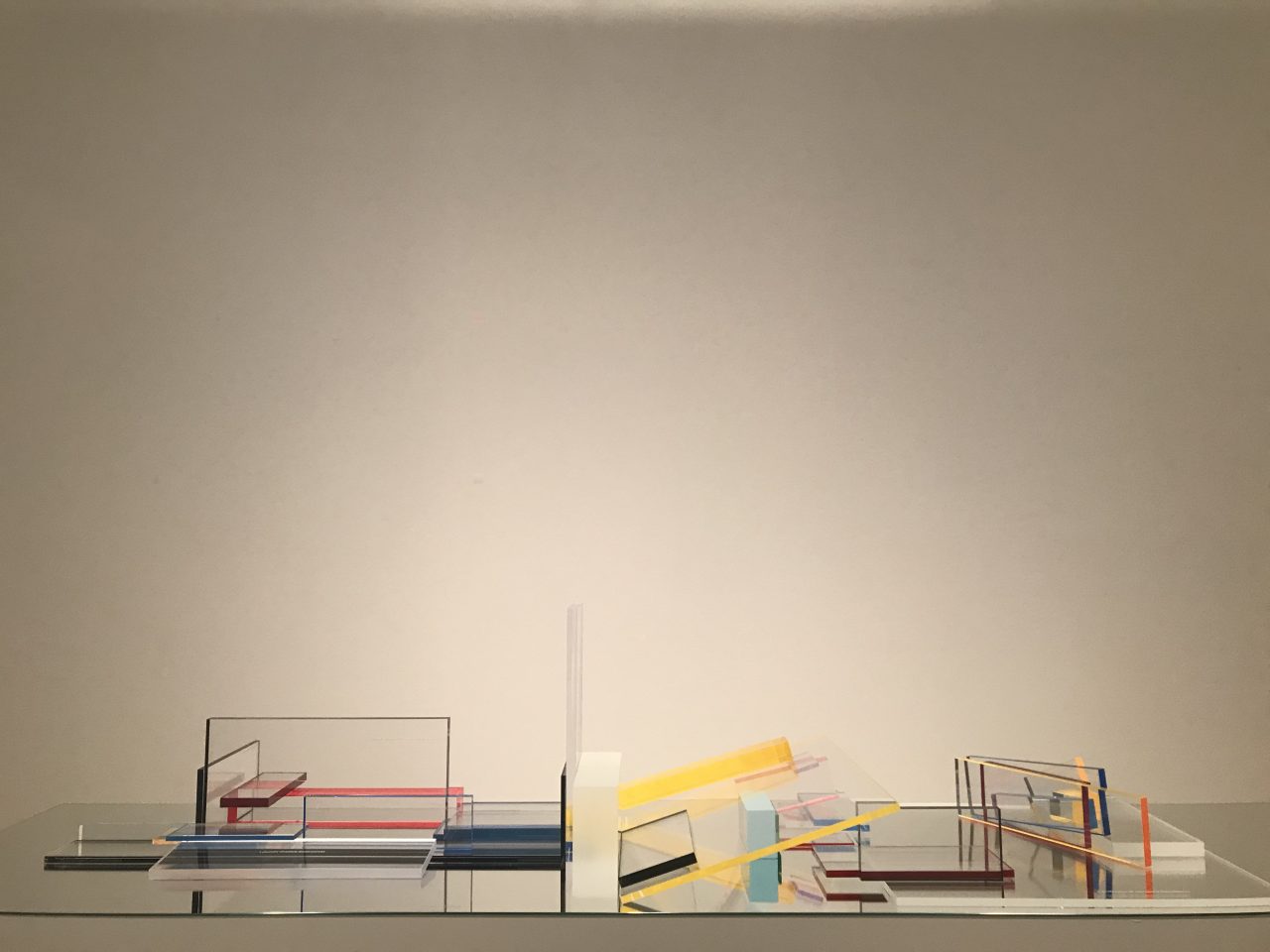
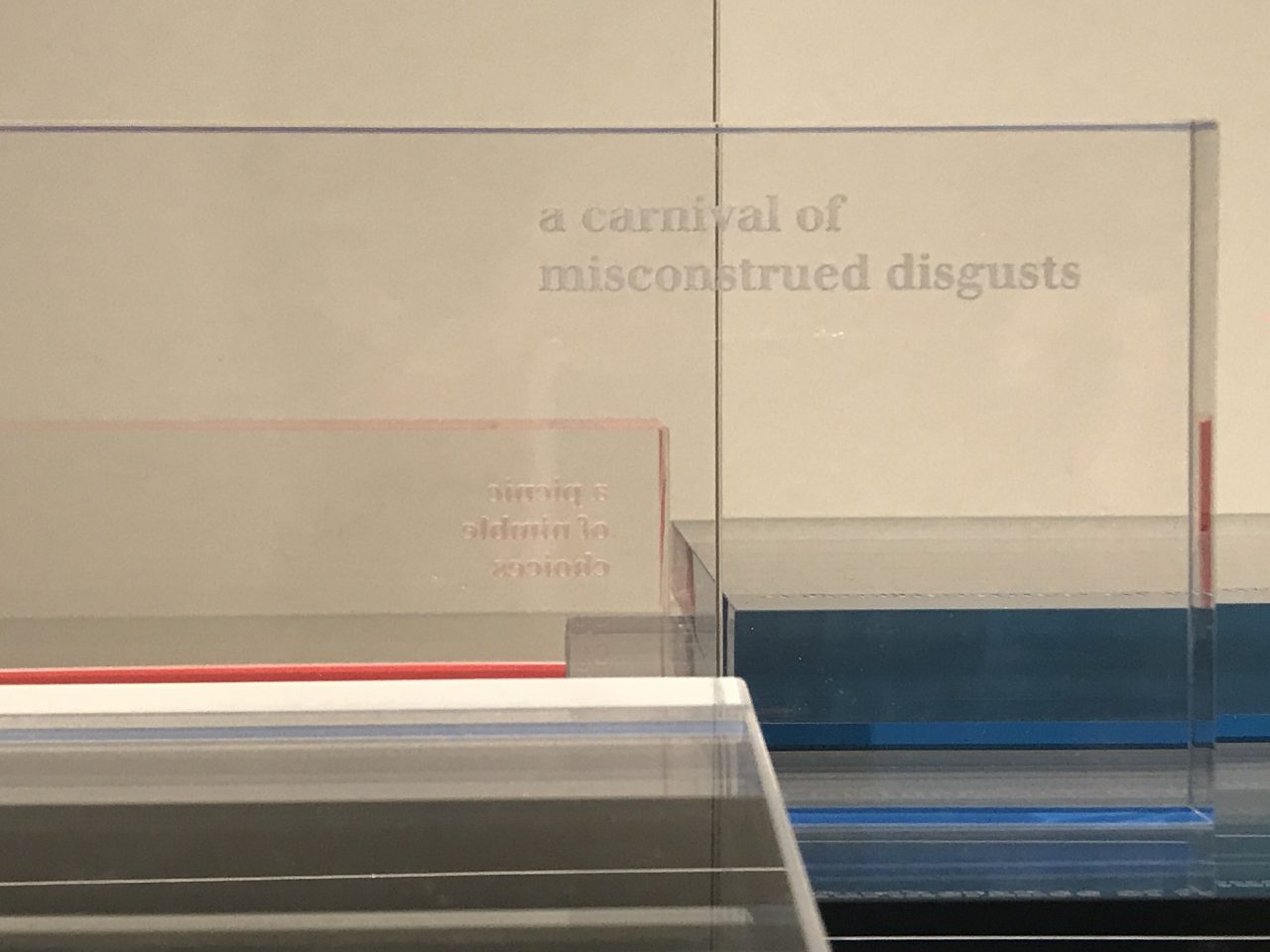


Prostheses for the History of Insurgent Crowds
Printed panels with wax ex-voto limbs, wallpaper
24 panels, each 1 x 1m
The acceleration of the assembly line is interrupted by accidents. Legs, arms, hands, eyes, and other bits of life become unpredictable crowds (found ex-votos from a Mumbai church) at the altars of progress and speed. Bodies assemble behind the limbs – pixelated human forms – to constitute a counter-collective. Who breaks whom? What is broken and what is healed?
Iteration at: The Whitworth, Manchester (2017)
In Rewriting On the Wall, hand-prints are reconfigured to produce an alphabet of gestures—each a gloss of the letters in standard American Sign Language as used by the deaf community. The letters add up to a text (which accompanies the work): a stammering, hesitant, syntactically unsure consideration (written by a hand that appears on the wall like the hand that wrote on the wall in the episode of Belshazzar’s feast in the Old Testament) of the relationship between ‘I’ and ‘We’ and the horizon that encompasses singular and plural modes of being.
Iterations at: Art Gallery of York University, Toronto (2011); Frith Street Gallery, London (2012)


Archetypes and Other Permissive Forms
Laser cut aluminium foil, 12 plexiglass sheets
257 x 492 cm
Archetypes and Other Permissive Forms was comprised of 12 acrylic sheets and etched aluminum figures taken mainly from the Museum’s tapestries. The sheets were installed several inches away from the wall so that the shadows cast by the figures became an element of the work.
Iteration at: Isabella Stewart Gardner Museum, Boston (2012)


Animation
Duration, 5’25”
A carnival: an autumnal solstice celebration of all that is animate and alive. Horses lose their heads, fish leave their shadows, Diana, the goddess of the hunt is in pursuit of roaring lions and worried dogs and stolid cattle and merry birds and golden dragons.
Equinox is made by Raqs in response to the collection at the Isabella Stewart Gardner Museum, Boston. The video plays on the sense of the night coming alive with animal forms, and echoes their experience during a flashlight midnight tour of the museum where they sensed a different animatedness in the objects of the collection.
Part of ‘The Great Bare Mat & Constellation’, Isabella Stewart Gardner Museum, Boston (2013)| Iteration at: National Gallery of Modern Art, Delhi (2014) | The Whitworth, Manchester (2017)
